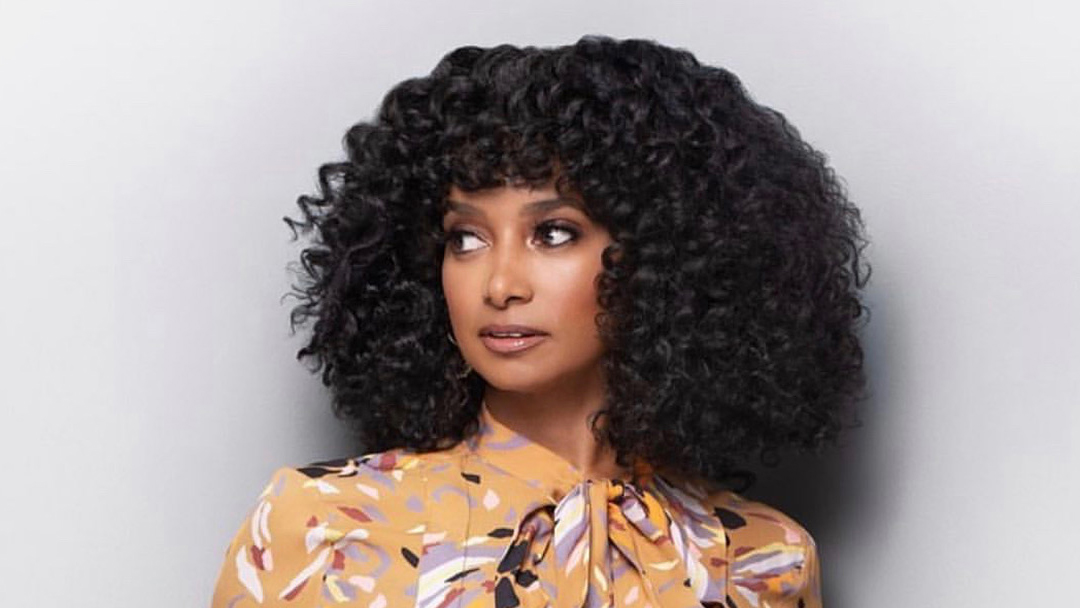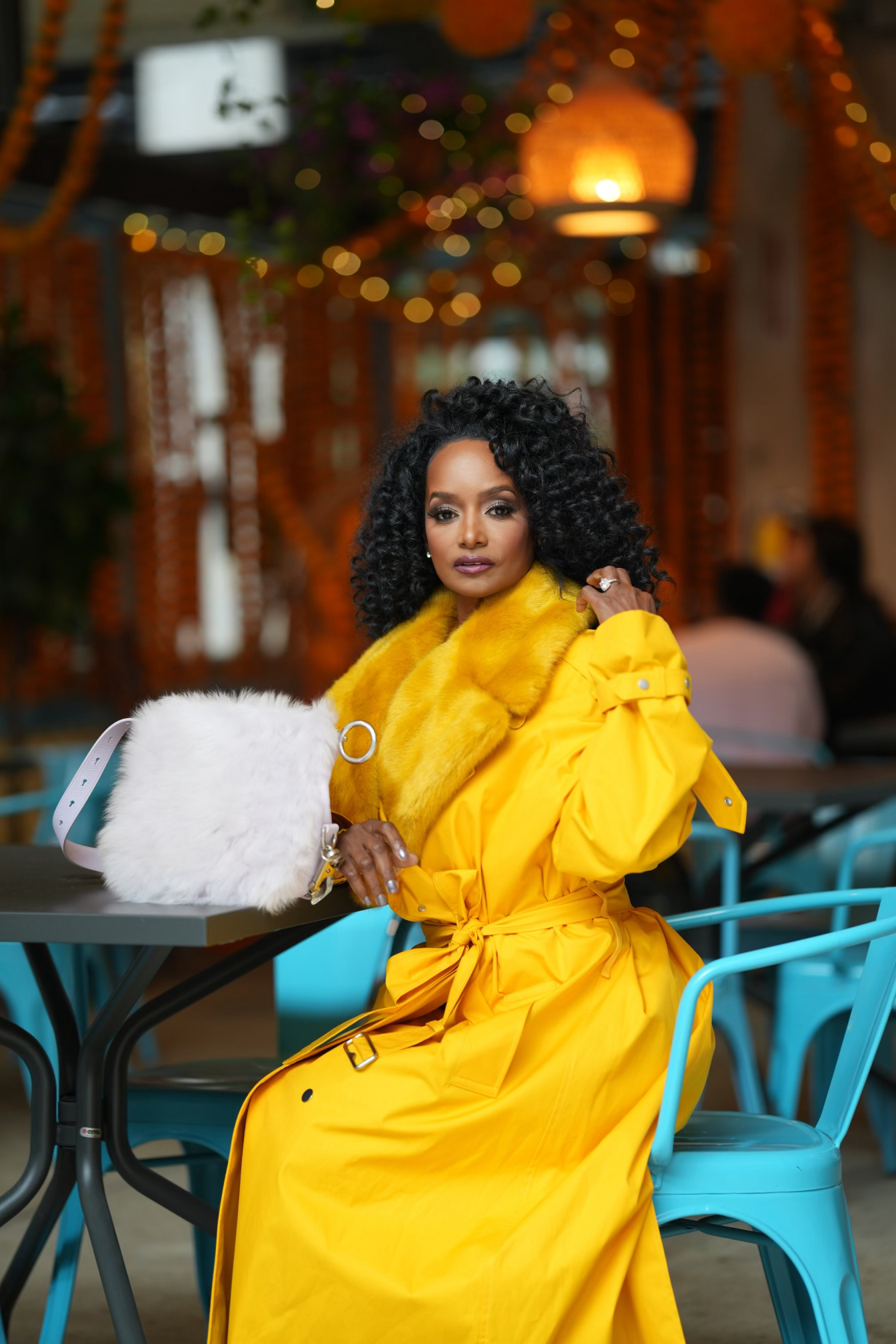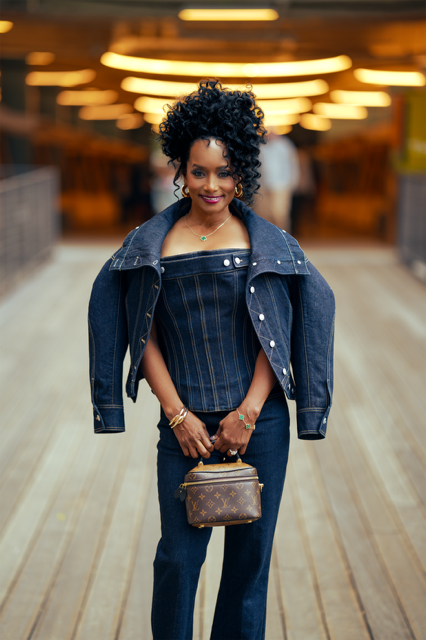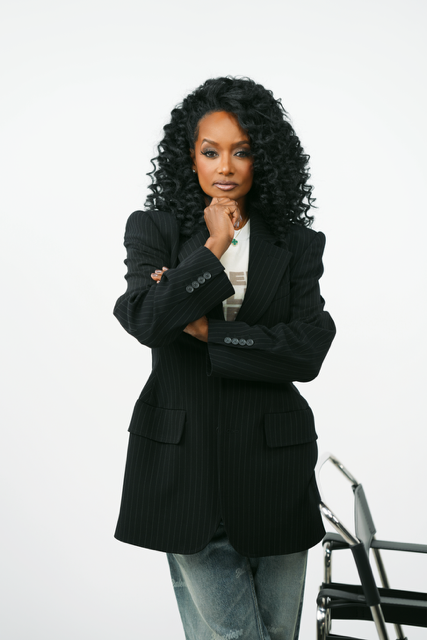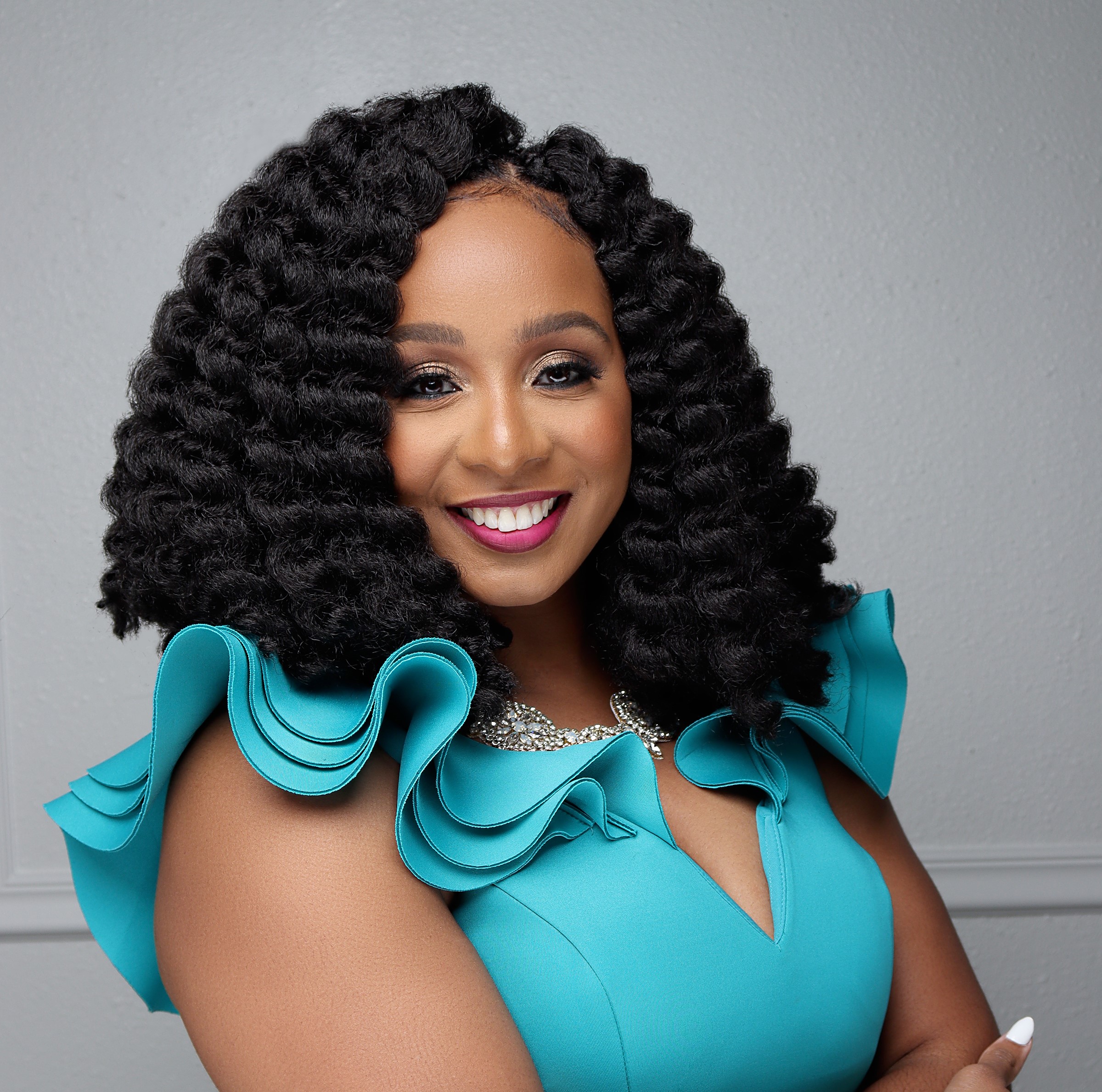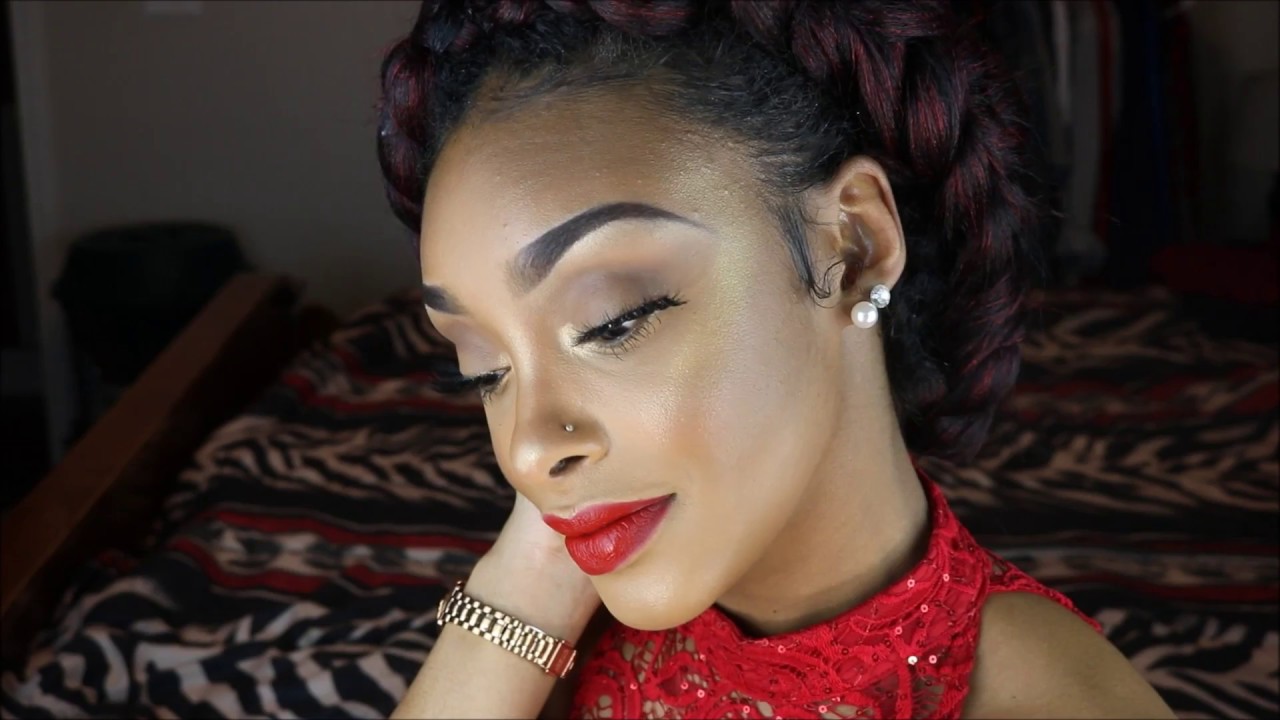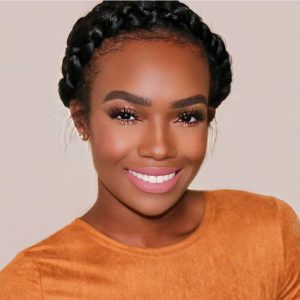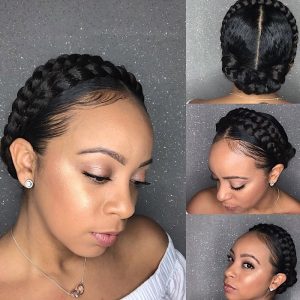Product Must-Haves for Lazy Girls
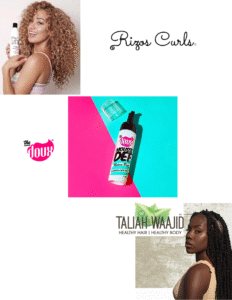
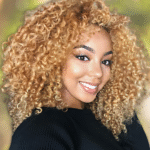 Let’s be real, textured hair is stunning, but taking care of it can feel like a full-time job. If you’re a lazy girl (no shame!) who loves low-effort, high-reward routines, you’re in the right place. These textured haircare heroes are designed to deliver moisture, definition, and shine with minimal effort. Whether you’re a wash-and-go queen or someone who sleeps in a pineapple bun three nights in a row, we’ve got you covered with easy, effective solutions that work with your lifestyle, not against it.
Let’s be real, textured hair is stunning, but taking care of it can feel like a full-time job. If you’re a lazy girl (no shame!) who loves low-effort, high-reward routines, you’re in the right place. These textured haircare heroes are designed to deliver moisture, definition, and shine with minimal effort. Whether you’re a wash-and-go queen or someone who sleeps in a pineapple bun three nights in a row, we’ve got you covered with easy, effective solutions that work with your lifestyle, not against it.
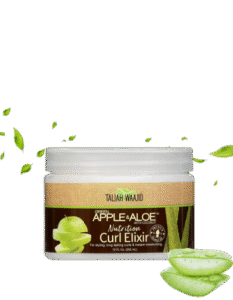
Taliah Waajid The Tried & True:
Green Apple & Aloe Nutrition Curl Elixir by Taliah Waajid
This Curl Elixir is a curl and hair styling conditioner that helps to reduce frizz while strengthening strands, sealing in curl form and shape. Produces long-lasting curls and leaves your hair feeling soft and tangle-free. This delicious concoction has awesome & amazing curl memory that works great on all curl textures and patterns. Great for second-day hair styling!
The Doux
The Doux’s Mousse Def texture foam mousse gives the hair an effortless, woke-up-like-this volume, with manageable texture.
Whether you’re aiming for waves, tousled, or a full-bodied look, this mousse is your perfect secret weapon.
…And bonus, it comes in travel size, so you can touch up your hair while on the go.
Product Attributes:
- Strengthens hair, leaving the hair soft and touchable.
- Features blue agave and green tea.
- Adds shine and control to the hair.
- Resistant to humidity
Rizos Curls
A Curl Defining Cream from Rizos Curls is a vegan miracle in a bottle. This curl definer will have your curls poppin’ and bouncin’, providing the perfect hold without the crunch…Bonus? There are no sulfates and silicones.
Product Attributes:
- Features Key Natural Ingredients
- The aloe vera deeply conditions, promotes healthy hair growth, and reduces dandruff
- The shea butter locks in moisture without leaving hair greasy
- The coconut oil reduces frizz, prevents hair breakage, and split ends
- There are no sulfates, silicones, or parabens & it’s cruelty-free!
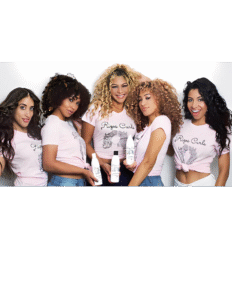
STUDENT HAIR CARE: How to embrace your hair in college and high school

For those who have naturally curly or coily hair, maintaining its health and embracing its beauty can sometimes be a challenge. People with textured hair can spend up to 4 times more on haircare than any other hair type (Prinzi, 2022). Attending high school and college are some of the most exciting times in one’s life. This is a period that is filled with new experiences and personal growth. This is also a time to develop good self-care habits and that includes one’s haircare.
For 30 years, the legacy brand African Pride has addressed the haircare needs of all hair types and textures whether natural or relaxed. The brand believes in the power of a great hair day and the boost of confidence that comes with it. To help you focus on stepping into your best self, African Pride has created products using premium, natural ingredients all at an affordable price.
African Pride is one brand that sees and hears the needs of college students.
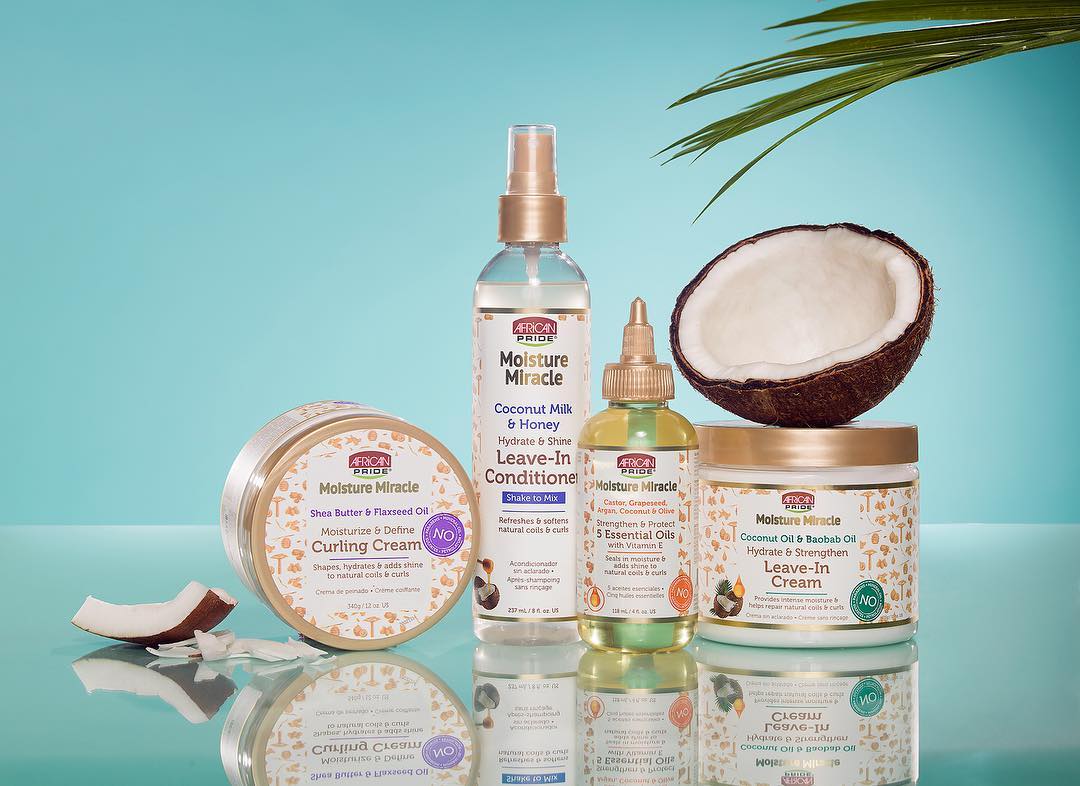
African Pride not only provides quality haircare products but also understands the emotional significance of having great hair.African Pride believes in the unspoken power of great hair.
Some of African Pride’s college favorites come in the following varieties.
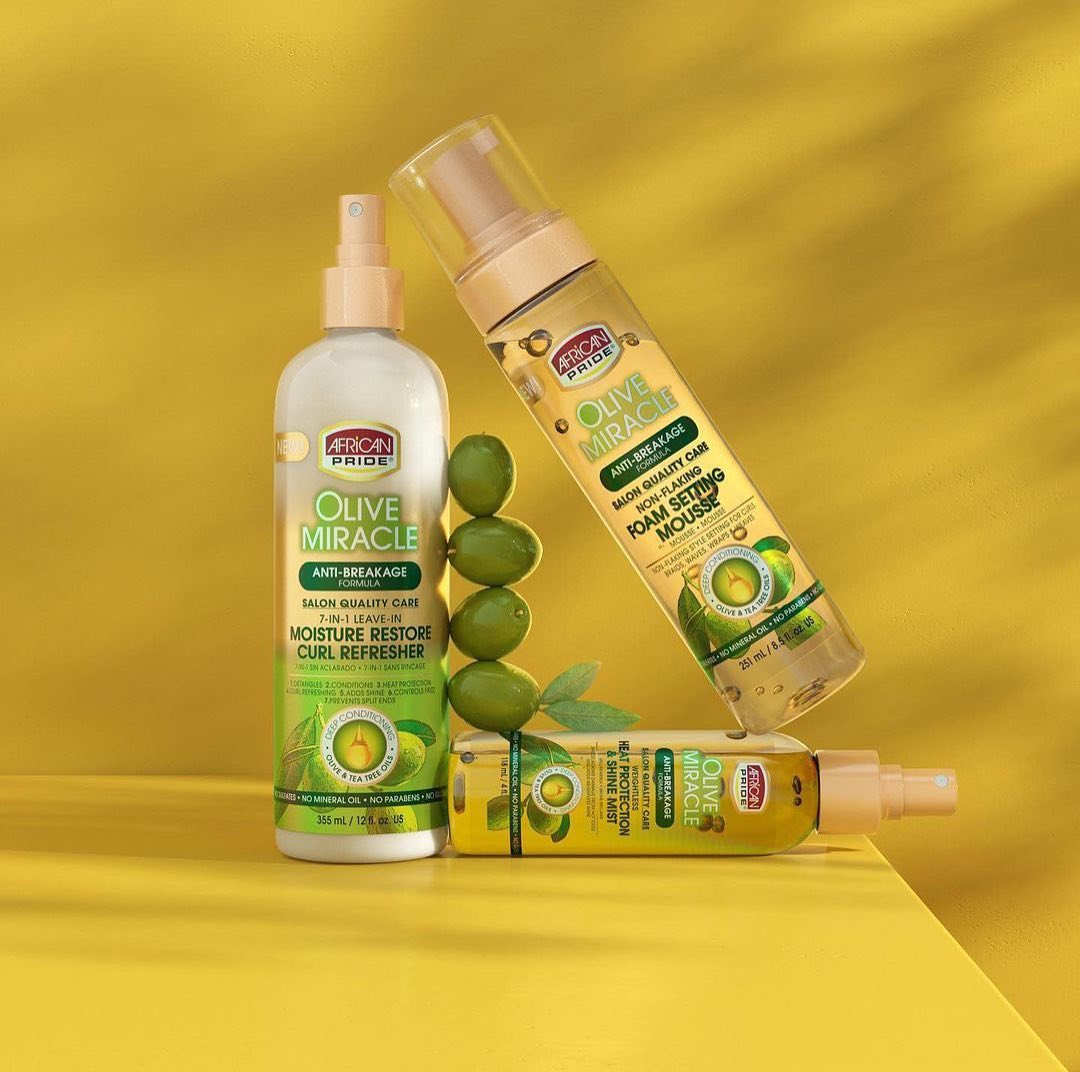
African Pride Moisture Miracle-Moisturizing and detangling formula. Provides deep moisture and radiant shine. Comes in a variety of haircare regimes.
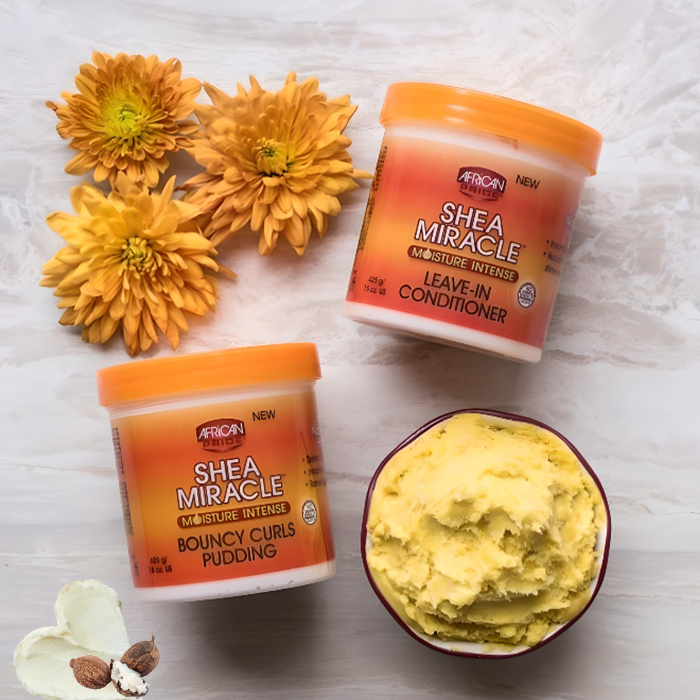
African Pride Olive Miracle- A blend of olive oil and tea tree oil hydrates, softens, and conditions hair while treating the scalp. Helps prevent dryness and improve manageability.
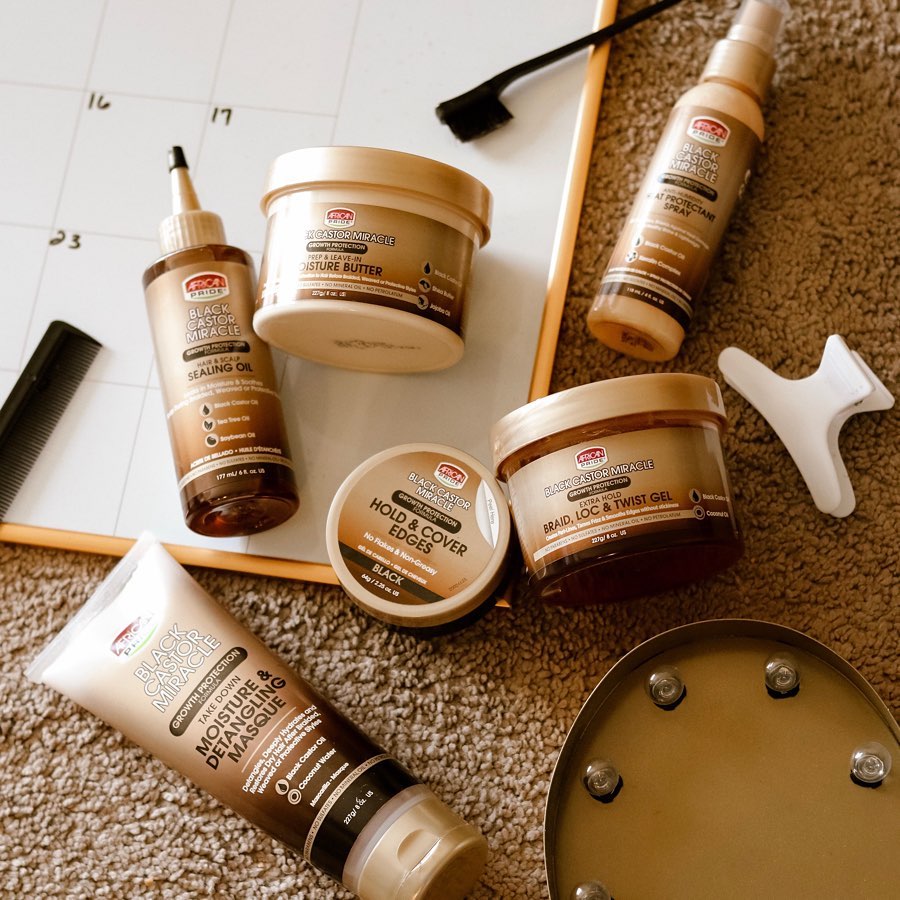
African Pride Shea Miracle- This moisture-intense formula helps eliminate dryness, and enhances body, bounce, and shine. Deep Moisture and Frizz Control.Includes mango butter.
So, take the campus scene by storm, and they refuse to hold back any of the fun… Because the fun never stops with African Pride.
Other collections made by African Pride:
Black Castor Miracle collection is infused with black castor and coconut oil.
——————————————————————————
Prinzi, L. (2022, September 13). Hair facts: 50 impressive black hair industry statistics. All Things Hair United States. https://www.allthingshair.com/en-us/all-things-natural-hair/black-hair-industry-statistics/
https://www.allthingshair.com/en-us/all-things-natural-hair/black-hair-industry-statistics/
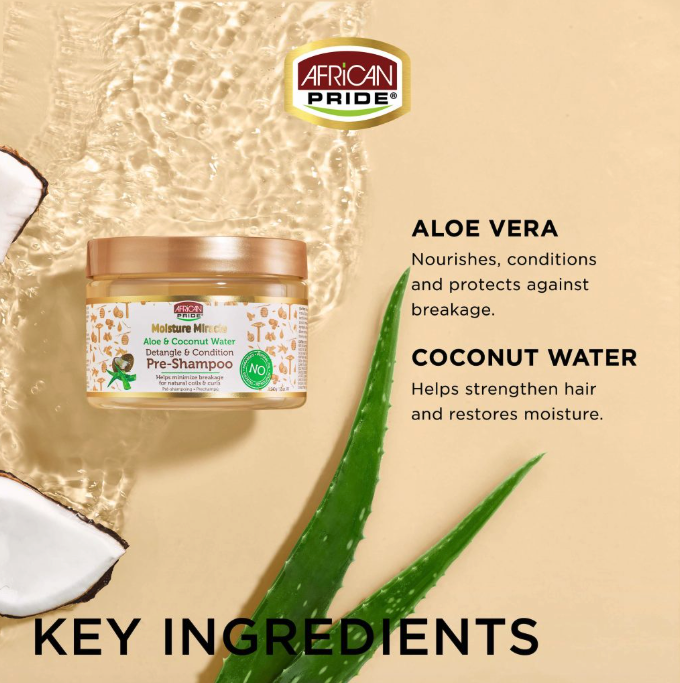
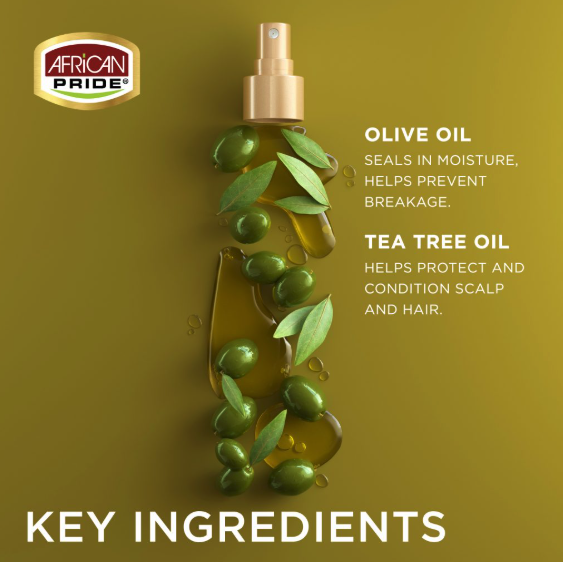
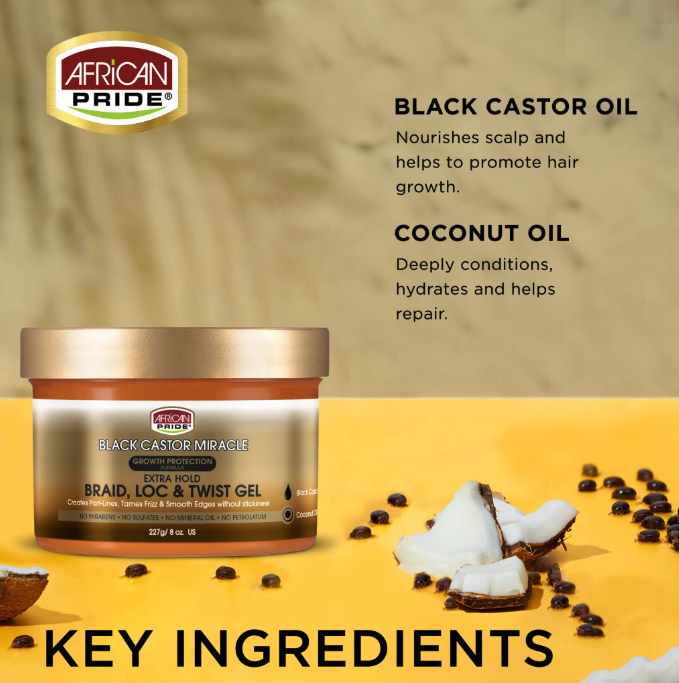
Works Cited:
https://www.essence.com/news/money-career/african-pride-haircare-homecoming/
https://impressionsofbeauty.com/
HIGH SCHOOL AND COLLEGE STUDENT HAIR CARE: Embracing Your Hair
https://myrevair.com/blogs/news/curly-hair-care-for-students
Black women can spend up to 4x more on haircare than women in other racial groups, with the average cost coming out to about 18% of their yearly income on products and upkeep alone.African Pride recognizes this and has stepped in to alleviate that heavy strain on cash-strapped college students.The legacy haircare brand recently announced the return of its partnership 7-year-old partnership with Impressions of Beauty, a multicultural college marketing company, to offer free products to college students.As a part of the partnership, African Pride also announced it will be providing products from the ‘Moisture Miracle’ collection to students at Historically Black Colleges and Universities (HBCU) and Predominantly White Institutions (PWI) across the country.
https://www.essence.com/news/money-career/african-pride-haircare-homecoming/
Camille Rose's Recipe for Beauty - Janell Stephens
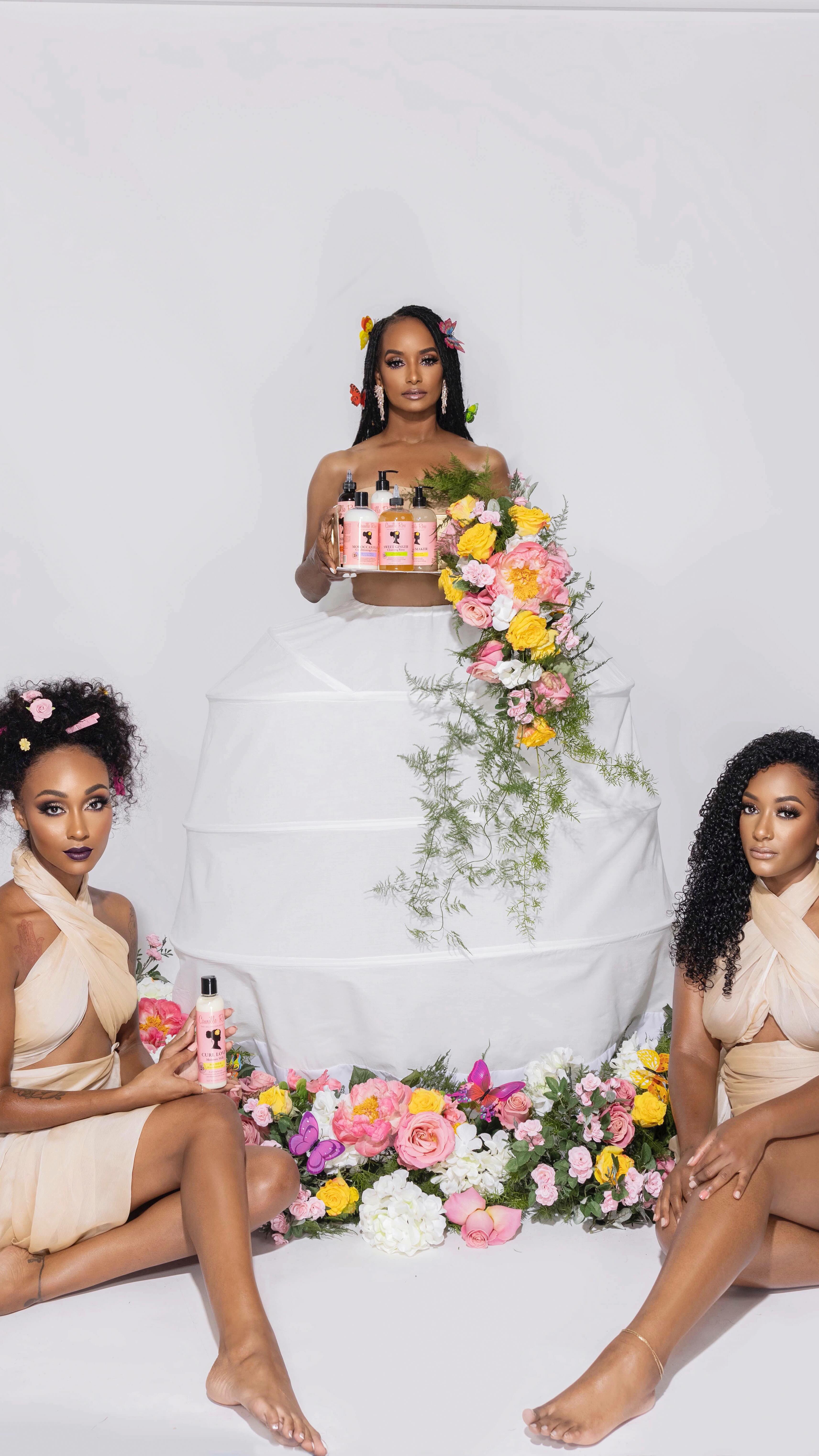
The multicultural beauty business is an explosive industry and at the forefront of this industry are strong, confident women who break through the glass ceiling with innovative commercially competitive ideas.
“It should be everyone’s mission to inspire the uninspired to see the true value of who
they are and what they can accomplish. Our gifts go beyond what we see immediately
before us and encompass the limitless opportunities that we are given every day to be
great.” – Janell Stephens
Janell Stephens, CEO and founder of Camille Rose LLC has been at the forefront of the recent radical shift towards natural haircare products, and throughout the beauty industry since 2011. Under Janell’s leadership, the natural haircare brand has exploded onto the consumer favs list and she has been able to grow Camille Rose in both its sales and consumer awareness.
Many diverse communities and consumer markets have embraced clean living, and Janell Stephens has happily accepted her position as one of its pioneers
She has embraced her position as a leader within the beauty industry with the support of legions of buyers and fans of Camille Rose products. These buyers and fans have helped the brand expand to five collections and nearly 40 products.
The Camille Rose brand continues to grow, as does Janell’s dedication to educating, inspiring, and motivating others in the beauty and business industry. As a leader, creator, and influencer, Janell has transcended from being a brand founder to a beauty industry leader.
Learn more about Janelle at MORE ABOUT CAMILLE ROSE
Canviiy by Sherrel Sampson
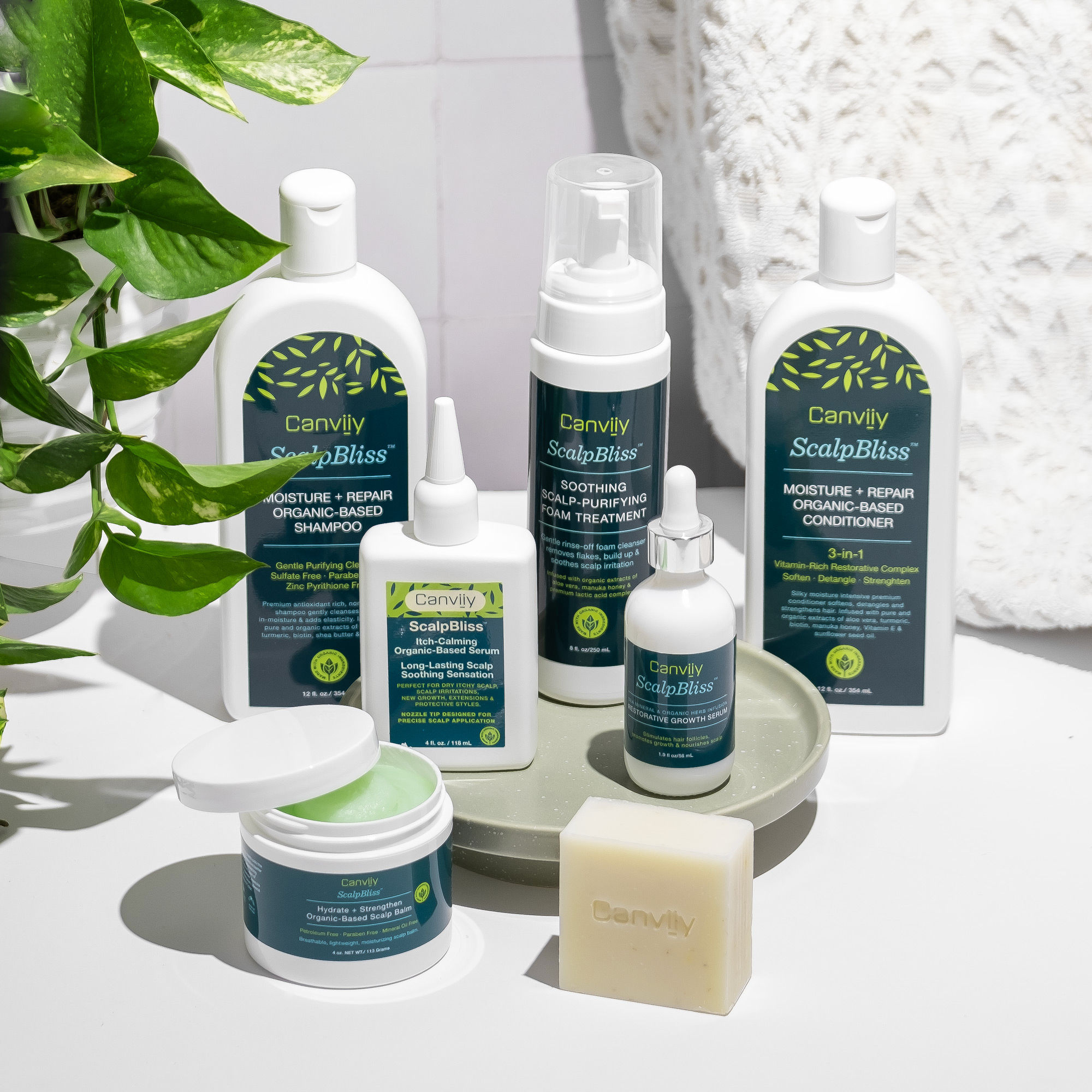
Sherrel Sampson founded Canviiy as an organic-based product for all types of scalps. The natural solution for itchy dry skin caused by coloring, extensions, wigs, protective styles, and extreme flaking, Canviiy can provide relief for weeks at a time.
Canviiy is so effective that it is used as a natural alternative to steroid creams at some of the top Cancer centers in the nation. Canviiy also offers products that address hair growth, moisture, and best-in-class hair detangling. Canviiy products can be found at Walmart, CVS, Wegmans, and Sally Beauty.
Our 2024 pics: Best hydrating hair care products for type 4 natural hair
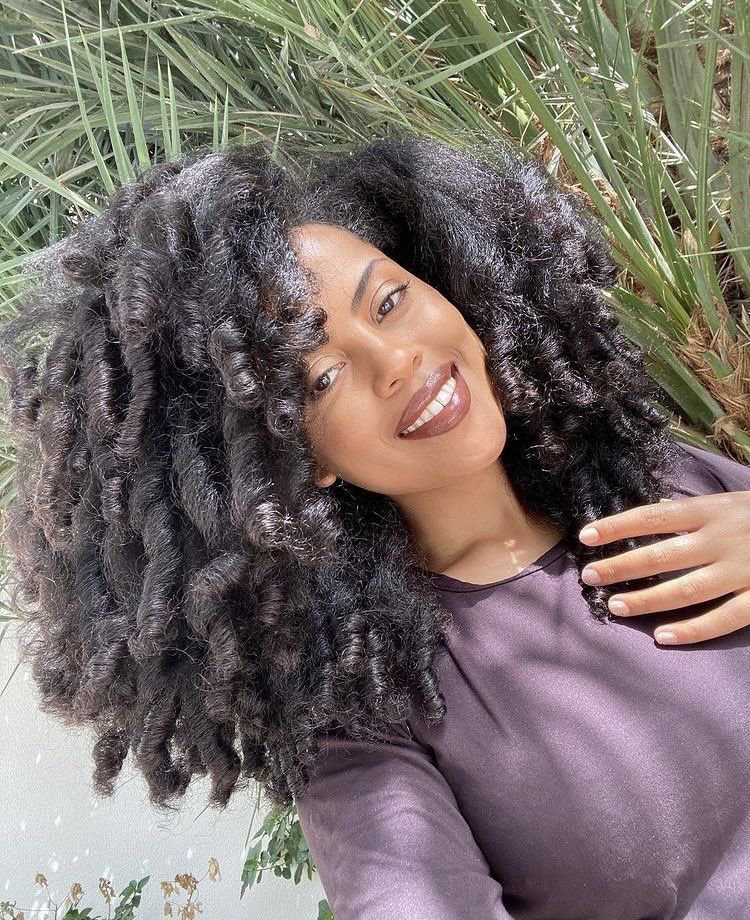
Best Type 4 Shampoos
Sweet Ginger Cleansing Rinse from Camille Rose
Invigorate your hair with Sweet Ginger Cleansing Rinse, an aromatic hair cleanser crafted to wash strands without stripping moisture. Sweet ginger and aniseed oil are infused in our shampoo to nourish the scalp and hair – perfect for all hair types.
- Sulfate-Free Suds
- Sensational Moisture
- Purifying Ginger
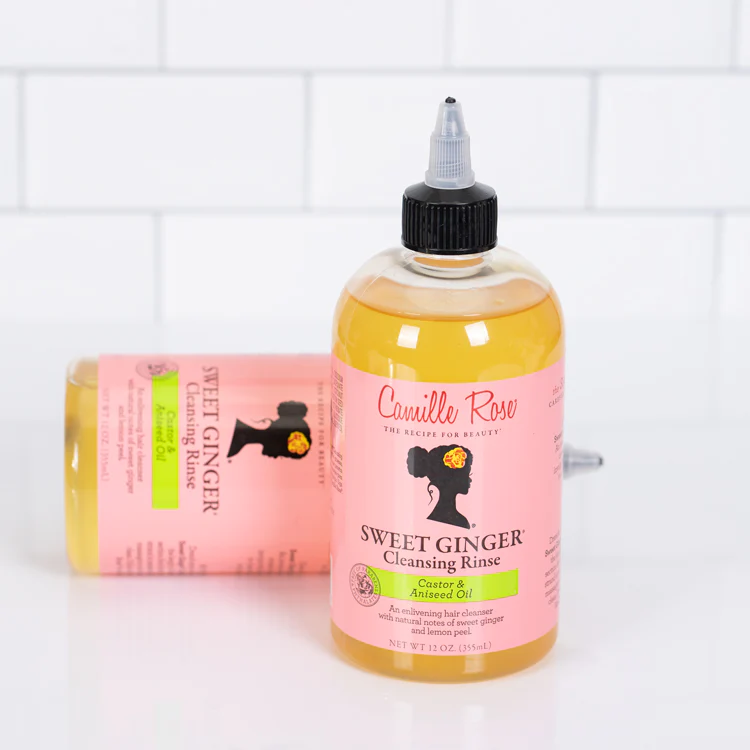
Stimulating Herbal Cleanser by Taliah Waajid
You will love Stimulating Herbal CleanserTM’s cool minty feel and scent. It stimulates and cleanses the scalp.

-
Clarifying shampoo
-
Helps to stop itching and other minor scalp irritations
-
The scalp feels clean and refreshed.
Aloe & Coconut Water Pre-Shampoo from African Pride
Incorporating pre-shampooing will help to minimize damage and enhance and define coils. Using the moisturizing and detangling Moisture Miracle pre-shampoo before cleansing conditions, protects and removes tangles from the hair leaving it soft and easy to manage throughout the cleansing and styling process.
This invigorating pre-shampoo soothes dry scalp and helps remove unwanted buildup. Aloe Vera and Coconut Water help to detangle coils and curls and make for easy styling.
FEATURED INGREDIENTS – Enriched with Aloe Vera: Nourishes, conditions, and protects against breakage; Coconut Water: Helps strengthen hair and restores moisture.
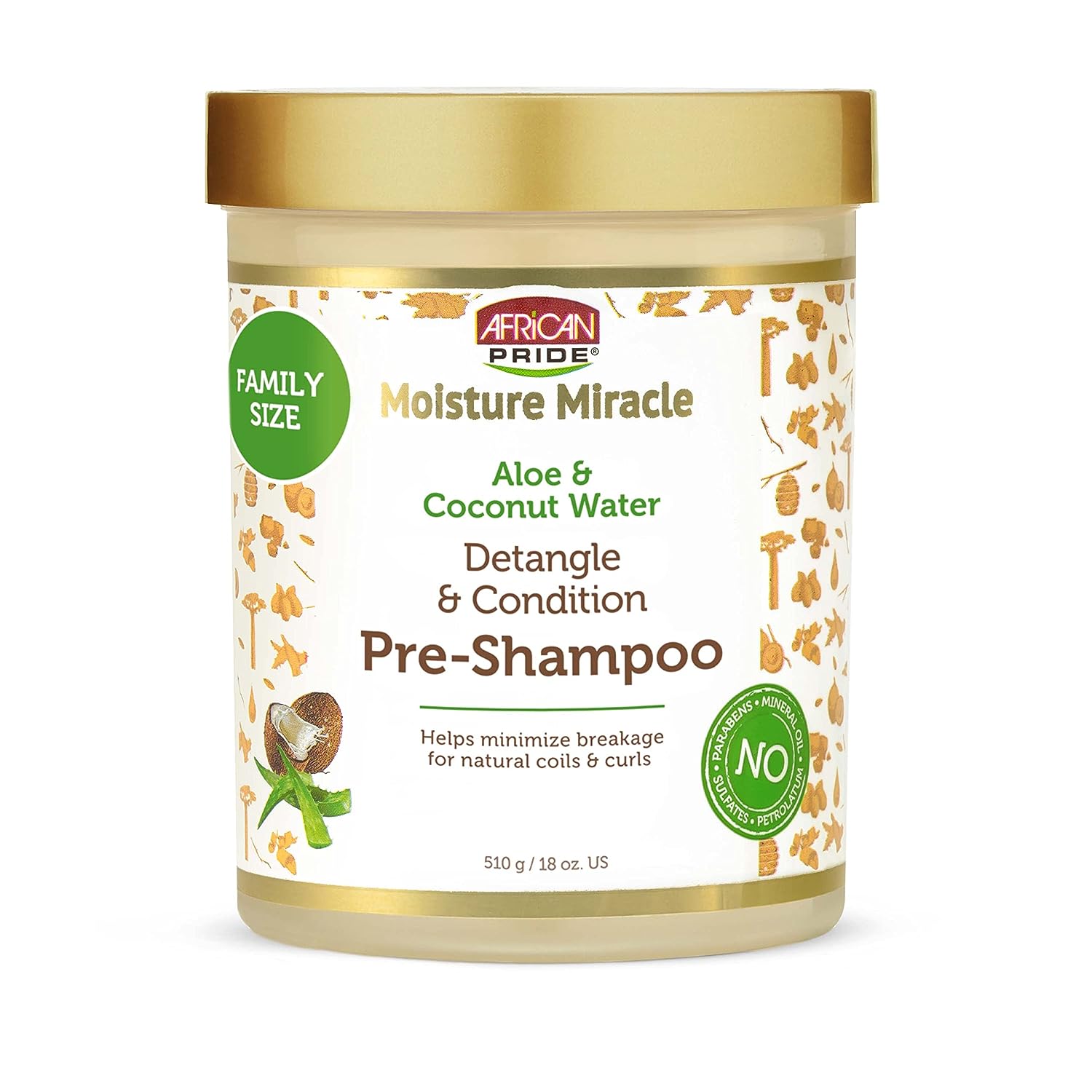
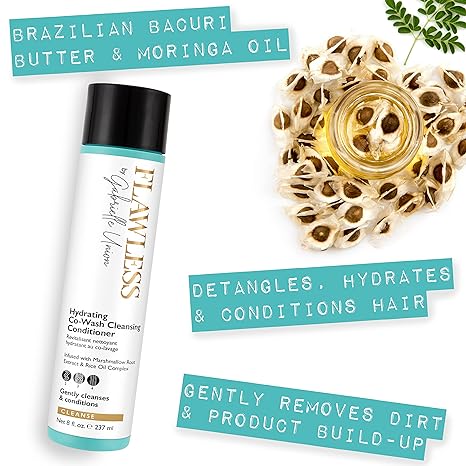
Flawless Hydrating Co-Wash Cleansing Conditioner
This cleansing conditioner gently removes dirt and product build-up while nourishing and conditioning hair. It is infused with Brazilian Bacuri Butter and Moringa Oil to detangle, hydrate, and condition hair.
This coily co-wash contains coconut oil, castor seed oil, passionfruit seed oil, and rice oil. Whatever style you choose for your hair, curly or protective this co-wash provides a nourishing cocktail for your coils that cleanses and conditions in one easy step.
Essence Magazine, “Beauty Best Sellers List” 2008⭐️
2020 Naturally Curly Award Winner⭐️
Organic Curl Care Cruelty-Free Can’t get that comb to glide through your hair?
KNOT TODAY TM is a creamy herbal conditioner and detangler designed to smooth the cuticle and remove knots, snarls, and tangles from thick curly textured hair.
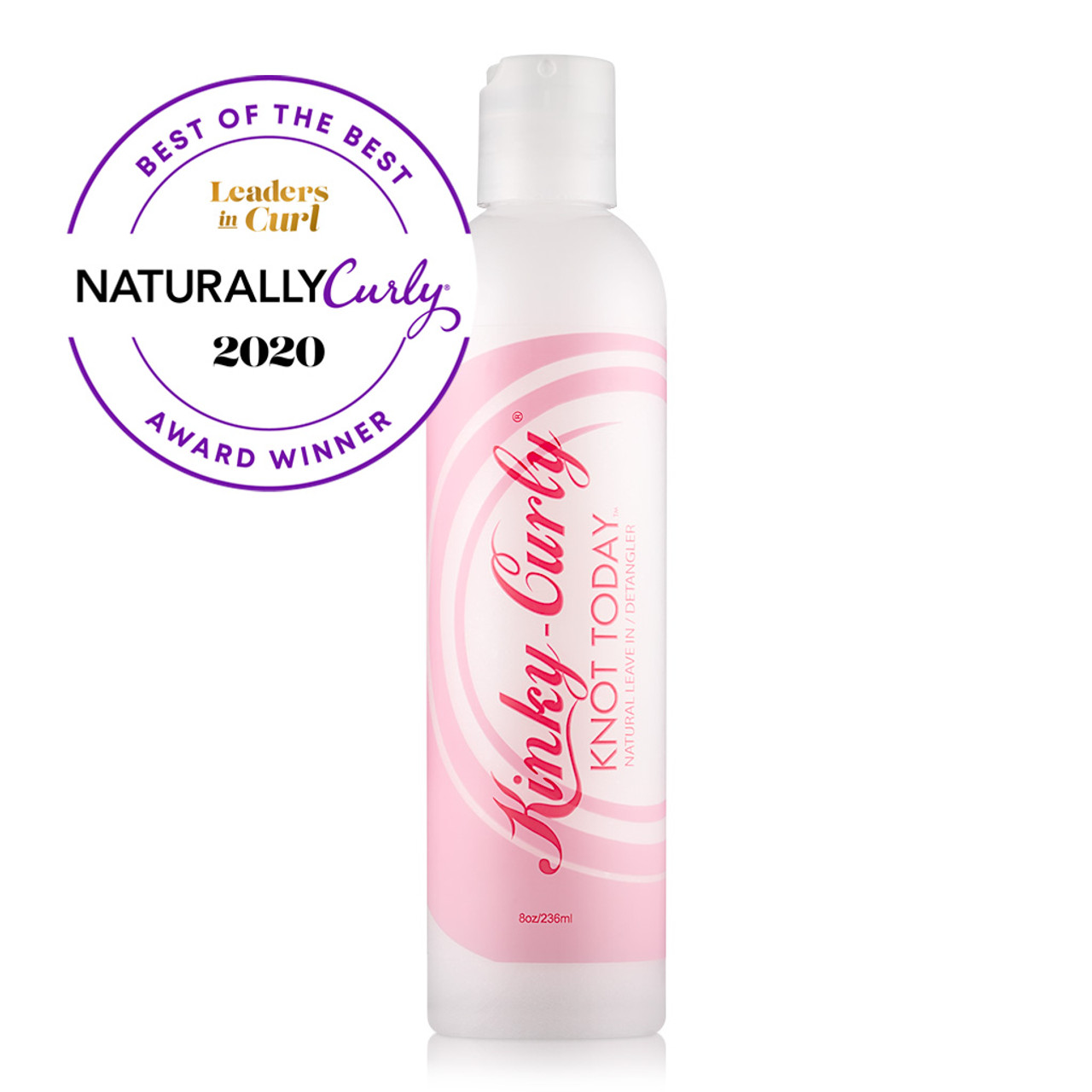
Pardon My Fro's Dana Bly Talks Haircare
Pardon My Fro is a brand that’s fierce, funky, and designed to help women embrace their hairstyles. This lifestyle brand was started by graphic designer Dana Bly, and includes haircare, home decor, luggage, and signature apparel, including illustrative kimonos.
This year Dana has expanded her brand into Pardon My Fro’s hair care assortment line, which includes: Moisturizing Hair Milk, Curl Enhance Conditioner, Detangler Leave-In Conditioner, Edge Slayer, Mousse, and Growth Oil. We sat down with Dana to chat about creating her first haircare line, her experience as a designer, and her entrepreneurial journey. NaturallyCurly.com was able to sit down with Dana and ask her a few questions:
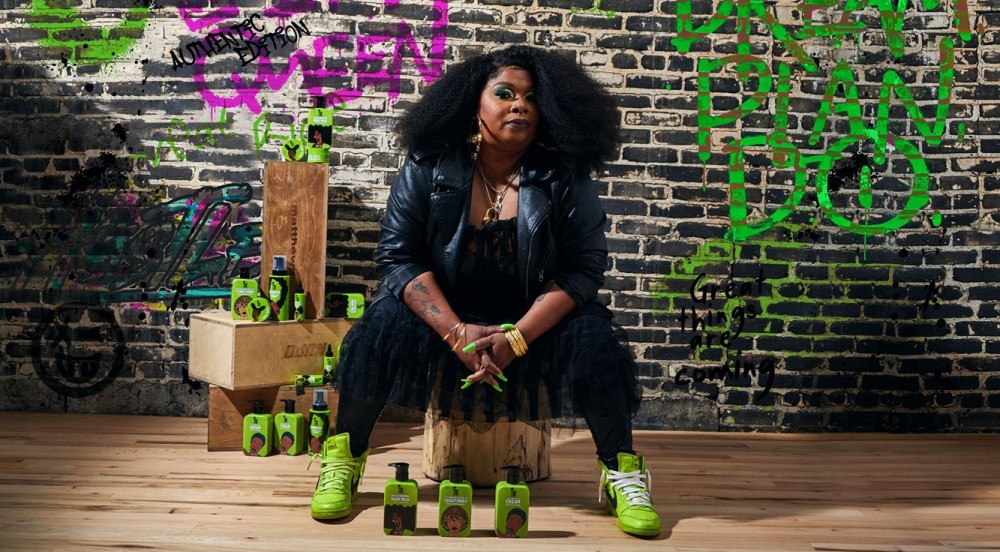
What did your experience as a graphic designer do for your approach to textured hair?
I think when I first started designing, I probably self-consciously was always designing tight curls because my hair was sporty. It wasn’t until I learned about the diversity of textures in hair and got inspiration from my friends that I expanded my designs. I realized that natural hair comes in all different shapes and sizes and I feel like it has changed over the years. If you see a design from like 2010 versus now, you’ll see some versatility in that.
What have you learned from creating your first collection?
After the experience of working with a chemist, I wanted to make sure that whatever we did was focused on hydration and moisture. This had to be the key. I built Pardon My Fro based on my type 4C hair experiences. I felt like my hair never got washed, moisturized enough, and was never hydrated enough. My scalp was always so dry, so I examined all the brands on the market that had previously been effective for me. I brought those to the chemist and said to them, “Well, these are the ingredients that work for me.” It was very intentional for me to make sure that anything that we put out, that it has hydration.

What have you learned from creating your first hair care collection?
I’m still learning. We launched at Walmart in February and the overall experience has been wonderful. I believe that my artistry is what makes my brand unique. I focus on creating hairstyles that evoke emotion, tell a story, and reflect the personality of my customers.
I also put a lot of effort into creating a unique customer experience that is rooted in my artistry. The journey has had its ups and downs, but it is something that I’ve enjoyed.
Out of the entire collection, what’s your favorite and how would you recommend using it?
At first, hair milk. Hair milk was specially formulated to help moisturize and protect hair from the elements, and it’s easy to apply with its lightweight, non-greasy texture.
The Edge Boss, which won the Pop Sugar Beauty Award for Best Edge Control of the Year is also a great option for those looking for an edge control product because it provides a strong hold without leaving behind any residue. It’s also free of parabens and sulfates, so it’s gentle on the hair and scalp. This has become my new favorite because it smells so good, it’s compact, and travel-friendly.+
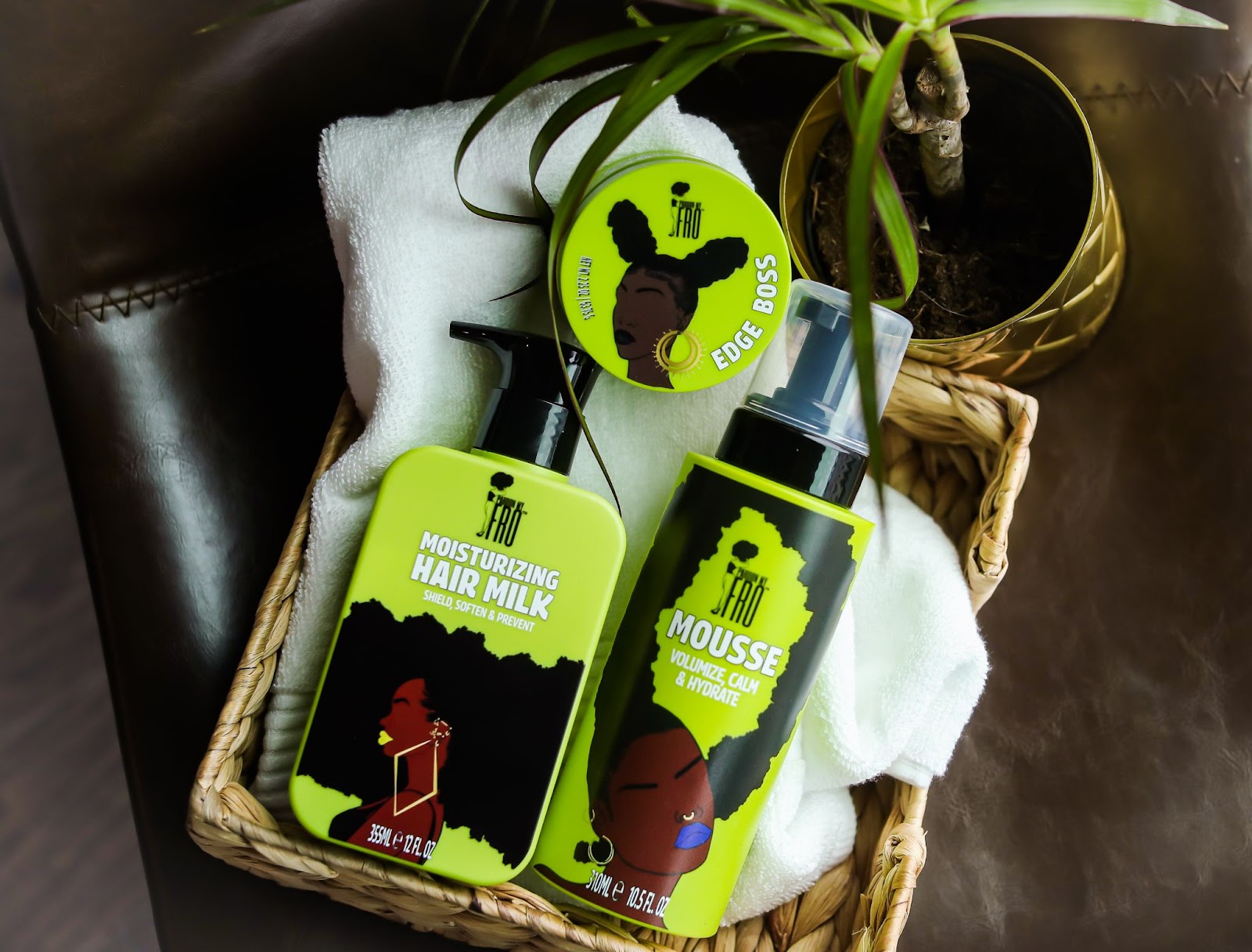
Back To School Hair Care: Tips and Tricks
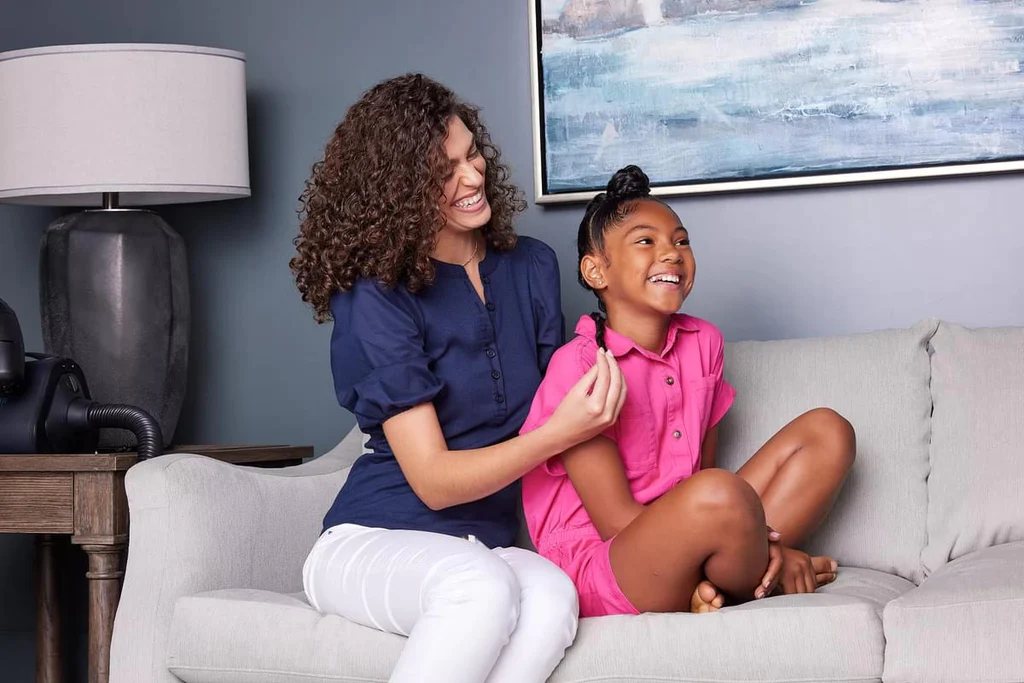
As the summer draws to a close, parents of children with naturally curly or coily hair are faced with unique challenges. Having the right strategies in place for managing children’s hair is essential, from daily maintenance, keeping it healthy and presentable, to taking care of it during the morning rush.
Here are some tips and tricks to help with your children’s natural curls and coils that are both beautiful and manageable. This list will help parents to navigate through the hectic back-to-school season.
MOST IMPORTANT: Establish a Haircare Routine
Set aside specific days for the washing, conditioning, and styling of your child’s hair. Consistency is the key to hair growth and strength so stick to it! We suggest using entire product lines specifically formulated for young locks:
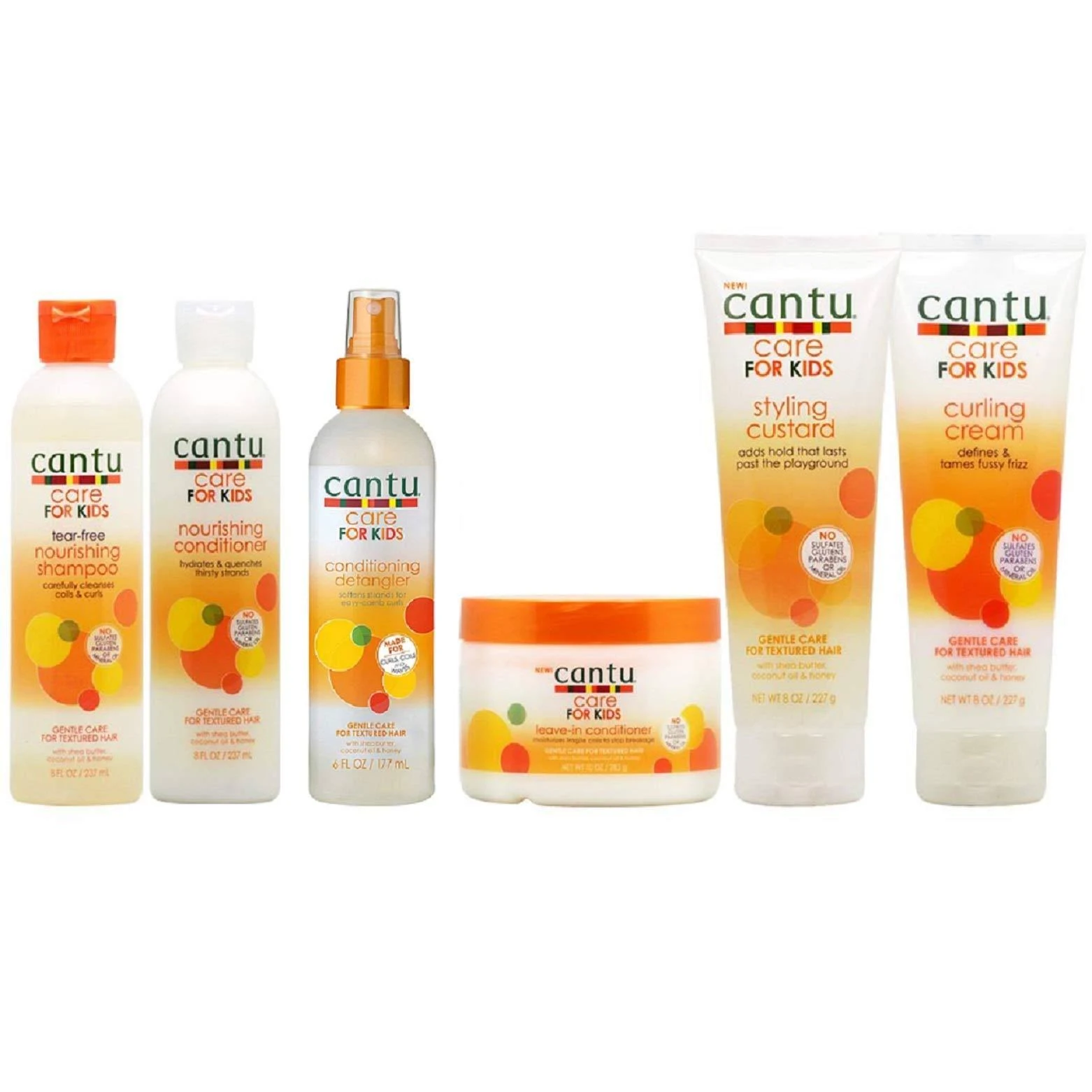
Cantu Beauty’s Kid Collection
Helps to nurture and nourish fragile coils, curls, and waves with Cantu’s gentle care for textured hair.
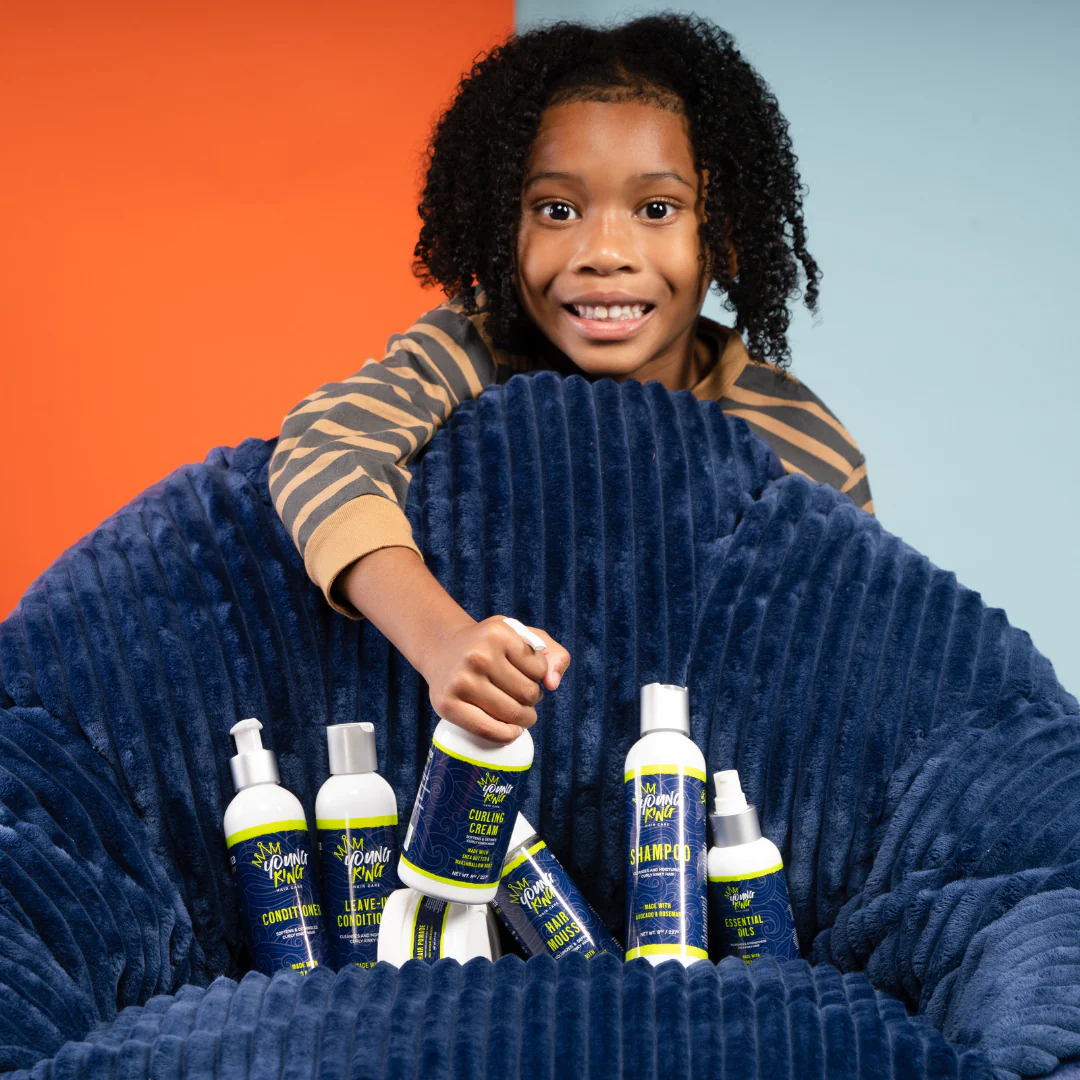
Young King Haircare
Offers clean natural hair care products that are specifically formulated for curly-headed young men and boys.
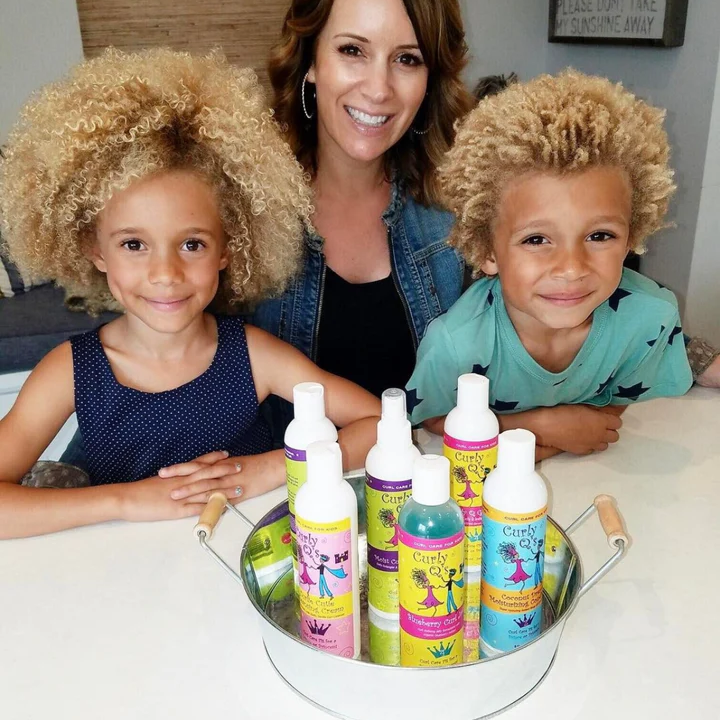
Curly Q’s Collection
Formulated with natural ingredients that are gentle, safe, and skin-friendly. Providing the perfect foundation for long-term hair growth.
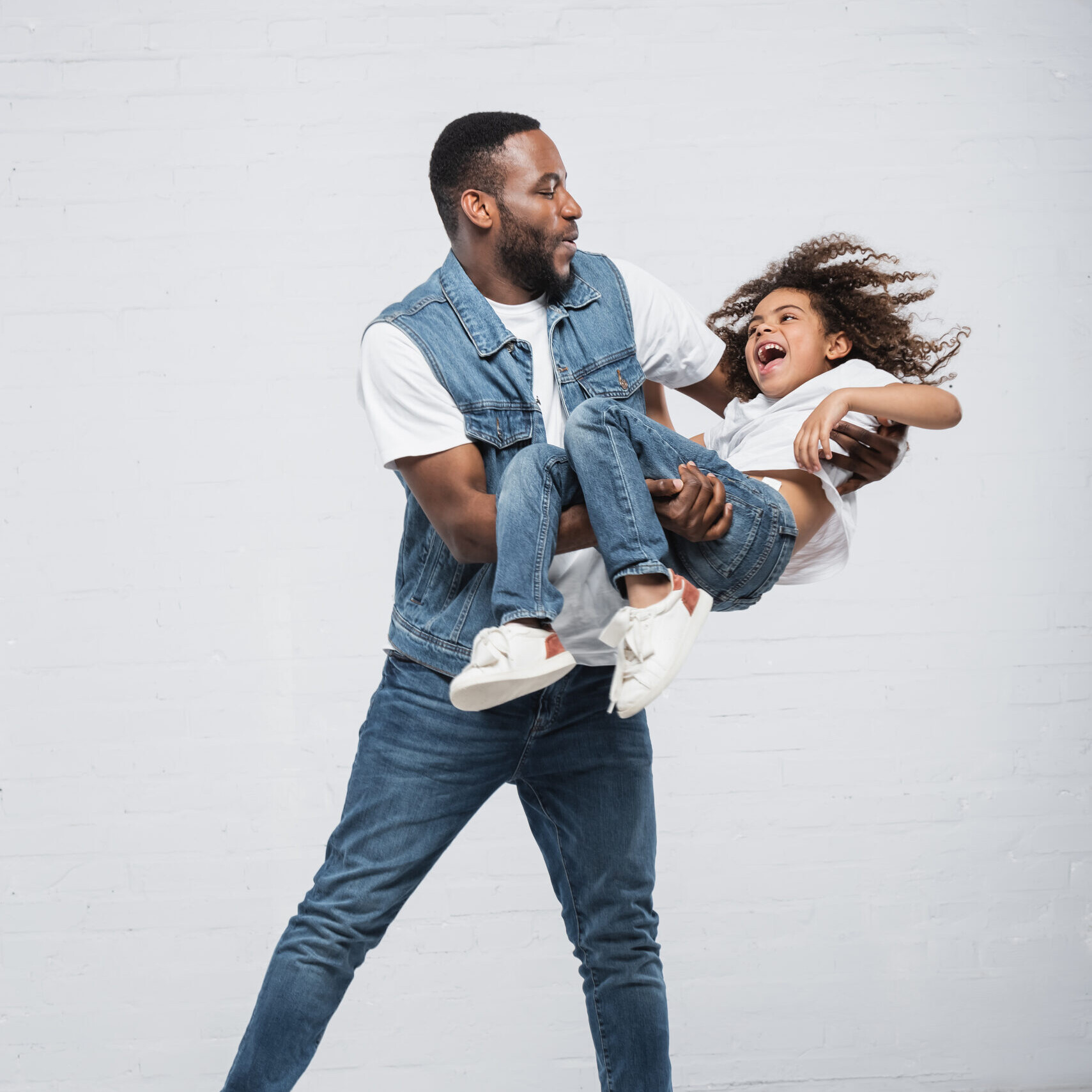
As parents of children with naturally curly or coily hair, the back-to-school season doesn’t have to be overwhelming. By keeping a consistent hair care routine that focuses on maintaining hair health, you can ensure that your child’s natural hair looks fabulous and remains manageable.
Natural Curly-Kid products you'll love for your curly kiddos!
Today’s market offers a large selection of products for your little ones that are natural, and kind to their locks. We gathered a few of our favorite natural hair products that work well on kids’ hair. These products are easy to use and even easier to find.
Our secret to finding what works best is to purchase a trial size of each product at first to determine what works best for your child.
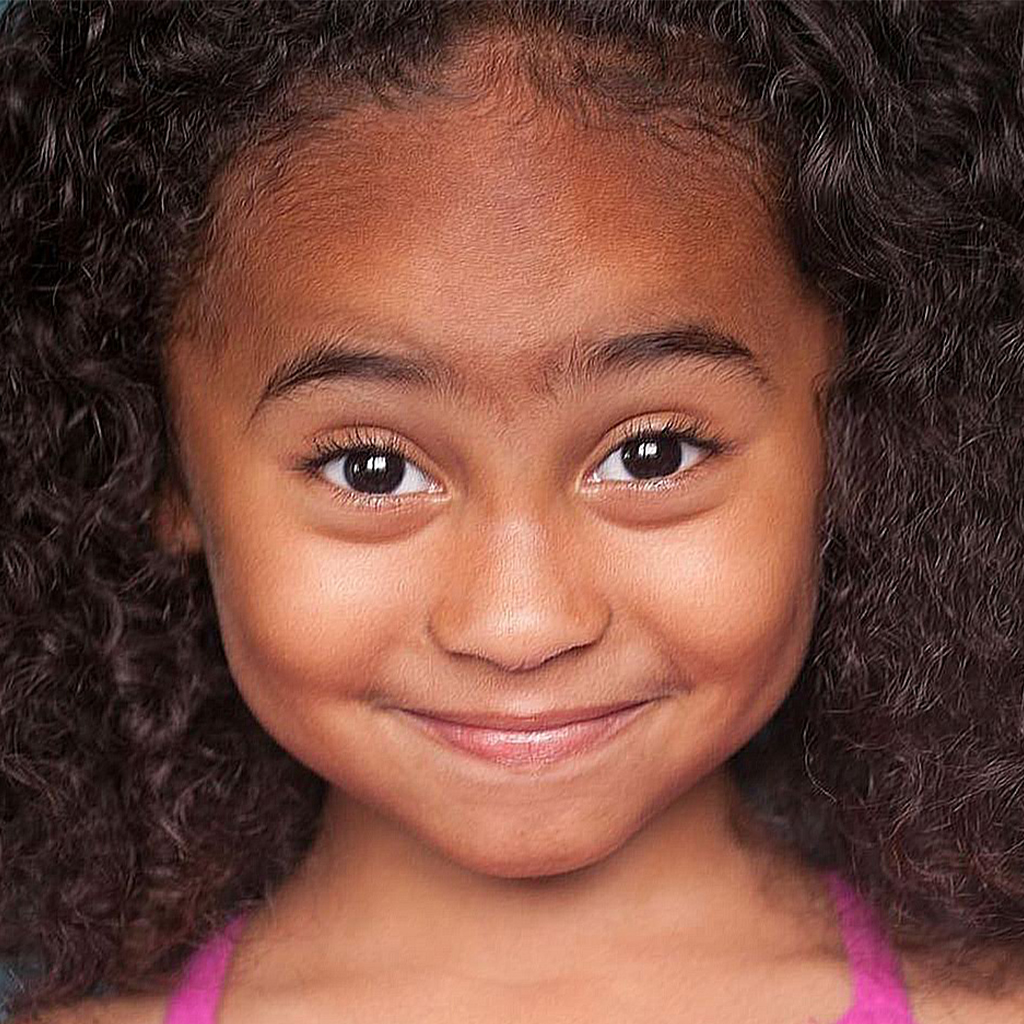
Honey Baby Naturals
Honey Baby Naturals is one of our absolute favorites for kids. Some of this line’s stars include a gentle Shampoo, Softening Conditioner, leave-in conditioner, and a Shea butter styling cream. The not-so-secret ingredient in these products is honey, which not only moisturizes hair, but your baby’s sensitive scalp as well. You will feel so great about using these products during bath time! Honey Baby products are also great for use on adult skin.
Naturally pure. Naturally healthier. Naturally confident.
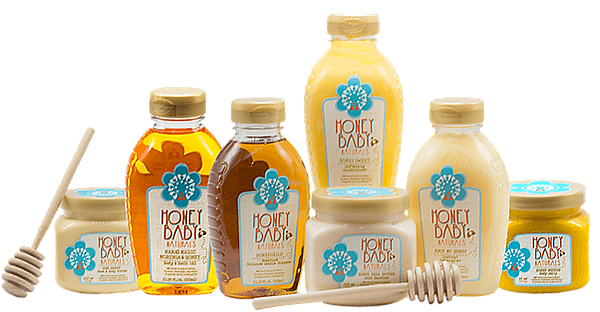
Pros: sulfate free, paraben free, mineral oil free, artificial color free, cruelty free
Curly Q’s
If you like the CURLS brand for your hair, then give Curly Q’s a try. Curly Q’s is their natural hair line of products that were specifically formulated for kids. The products contain some of your favorite natural oils found in CURLS products but are specially formulated for sensitive young scalps. Start with the Curly Q’s Cleansing Cream and Conditioner, then detangle with the Curl Moisturizer/Detangler. You and your child will also love how these products smell!
The Curly Q’s Collection – Protect and nourish your little one’s curls with the Curly Q’s Collection from CURLS.
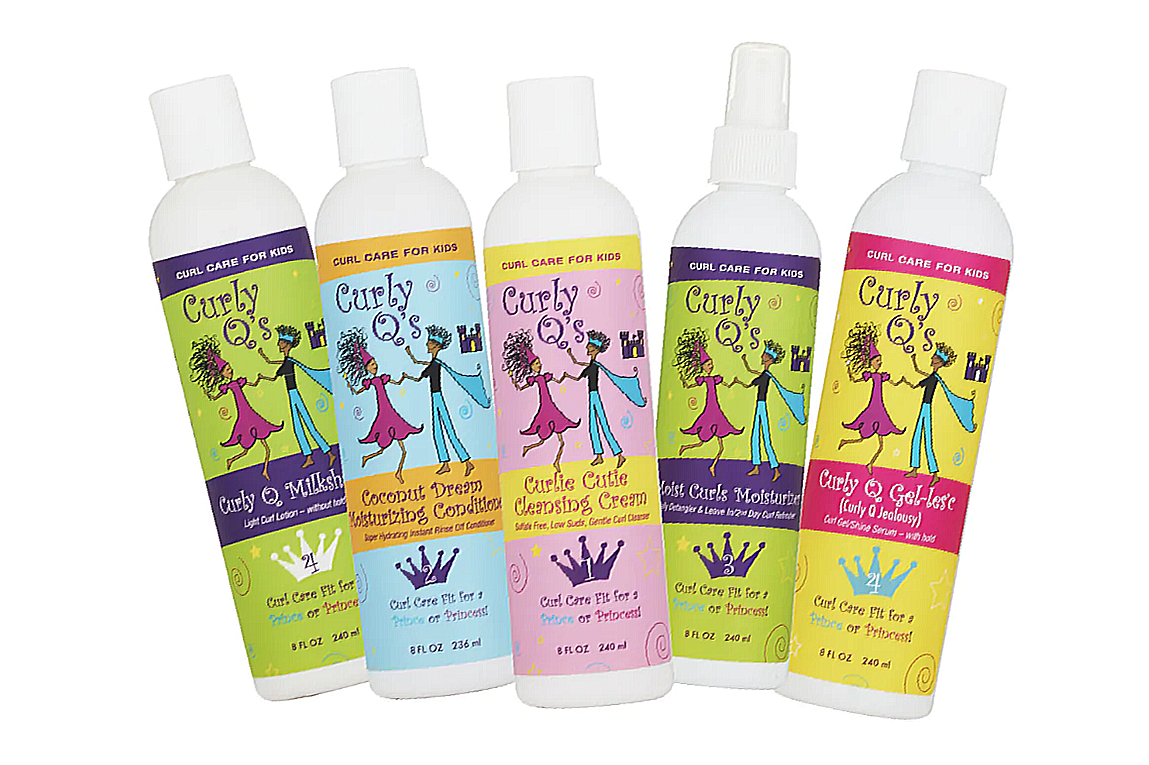
Pros: sulfate free, paraben free, petroleum free, mineral oil free, artificial color free
Young King
The Simple and effective ingredients produce hydrated, nourished and flawless curls from this boy-inspired brand. This product is perfect for young men on-the-go and the Young King hair products line gives young men and boys the tools they need to rock any style they choose, and smell good doing it!
The Young King Collection offers a simple, wash, treat and style regimen for your young man.
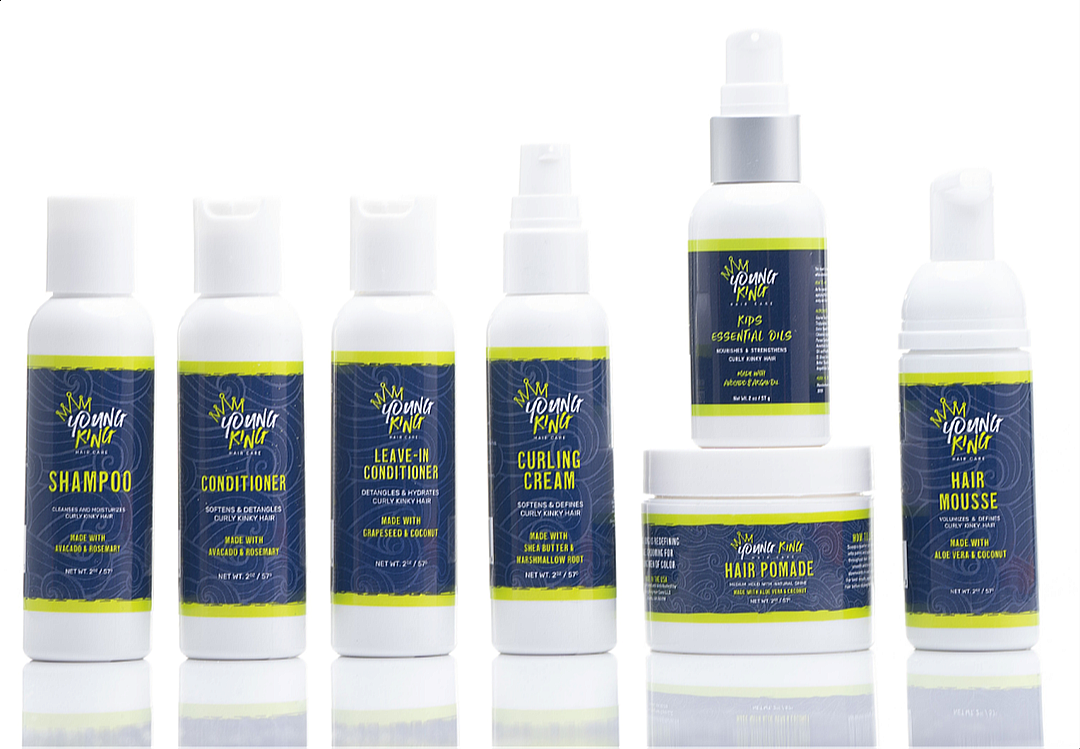
Pros: sulfate free, paraben free, natural product, plant based
Carol’s Daughter Hair Milk
While this brand is not specifically formulated as a children’s line, the Carol’s Daughter Hair Milk products are easy to apply, comb through and wash out. The Leave-In Moisturizer doesn’t leave residue or buildup, so kids with curls will have frizz-free, nourished curls that provide lots of shine. Bonus, you could always steal some for yourself if you run out of your products.
Created with powerful ingredients like agave, shea butter, and sweet almond oil.
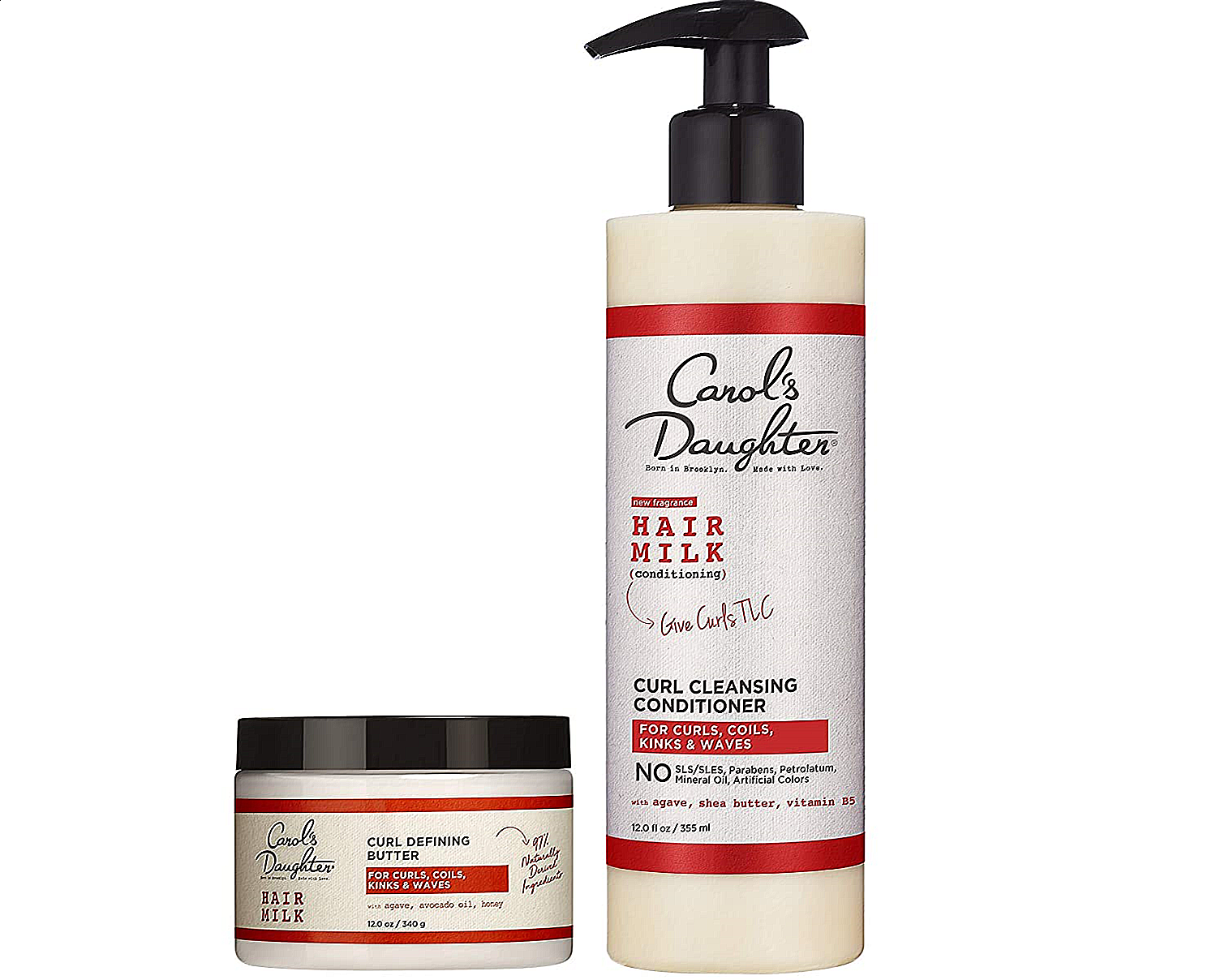
Pros: sulfate free, paraben free, protein free, alcohol free, petroleum free, mineral oil free, artificial color free.
…or DIY!
Lastly, try making a refreshing spray for your child with some distilled water and drops of lavender oil from your local health food store. This spray can be used to refresh curls and even keep frizz down. Plus, the pleasant fragrance is natural, light and calming for your child. If you are looking for natural hair products for kids, making your own can be a fun and easy option!
Tales of Texture: Jui Embraces Her Texture
Having textured hair as a child, how did it affect you?
As a kid I didn’t pay too much attention to my textured hair. I do have curlies in my family, my mom & aunt have always worn their natural textured hair without changing it or flat ironing it. It was more important to focus on school and extracurricular activities than appearance when I was growing up. We got to enjoy our childhood without the pressures a lot of kids face today. It was about the time I went to college that it became a challenge. The most common response you got in a salon was – Why don’t you straighten it.. There was no accessible information on how to take care of textured hair.
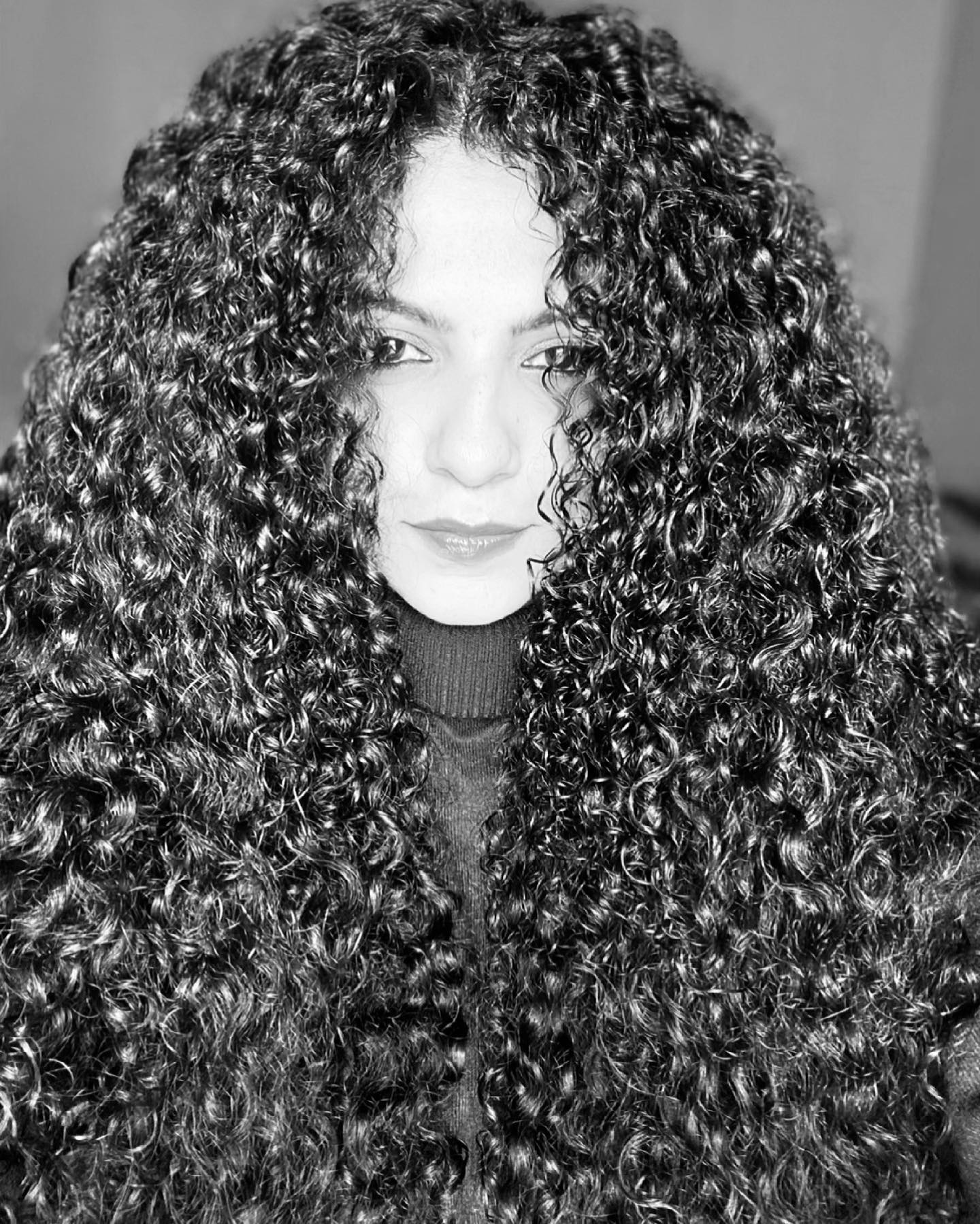
How did you come to embrace your naturally curly hair?
Just before I joined my first job, I had my hair chemically straightened. This was more related to conventional beauty standards and the perception that if you wanted to look professional, your hair had to be sleek and straight. So, I straightened my hair for 7-8 years. Eventually I got over the poker straight-haired look. Naturally straight hair looks good as does all types of hair textures, but my straightened hair looked ‘artificial’.
In your natural hair journey, what has been the most empowering moment?
Realizing that my natural textured hair made me feel more like myself! Some women have told me they showed my curly haired picture to their little girls & that they loved it & wanted to grow their own natural curly hair instead of wishing for straight hair.
What is the best way to protect your curls at night?
I use a satin bonnet or use a satin pillowcase.
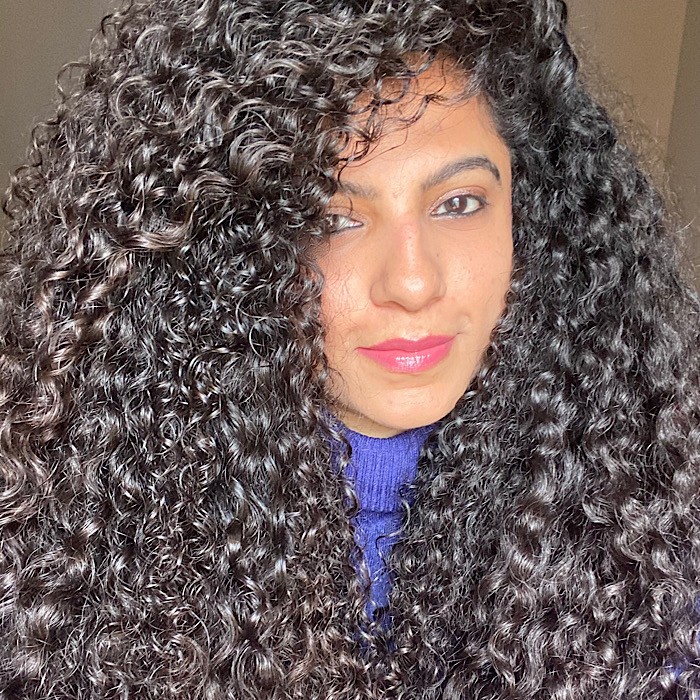
Do you have an essential curly girl you can’t live without?
Conditioner and Leave – in.
What is your current hair regimen? Any favorite products you’d like to share?
I try to follow the Curly Girl Method. You have to figure out what suits your hair the best.
Suggested products:
- Oil – 30-40 mins prior to hair wash
Difeel Premium Natural Jojoba Oil
Mielle Mint Almond Oil - Shampoo
Kinky Curly Come Clean Shampoo - I detangle my hair after applying conditioner. I gently scrunch my hair while rinsing.
Kinky Knot Today - I try to Deep Condition at least a couple of times a month. I prefer to Deep Condition on clean hair.
TGIN Honey Miracle Hair Mask - I use a microfiber towel or cap after rinsing & style my hair while it’s very damp.
Cantu Microfiber Drying Cap
Donna Microfiber Turban - In most cases, I prefer to let my hair air dry after I’ve styled it.


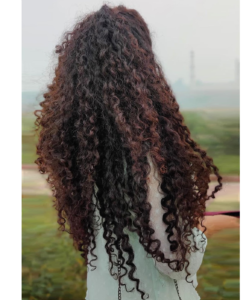
Do you have any advice for women who are struggling to love their natural texture?
Embrace your natural curls, and texture – frizz et al! Make the Curly Girl Method part of your life and don’t let it get in the way of your life! Finally, the Bigger the Hair, the Bigger the Dream!
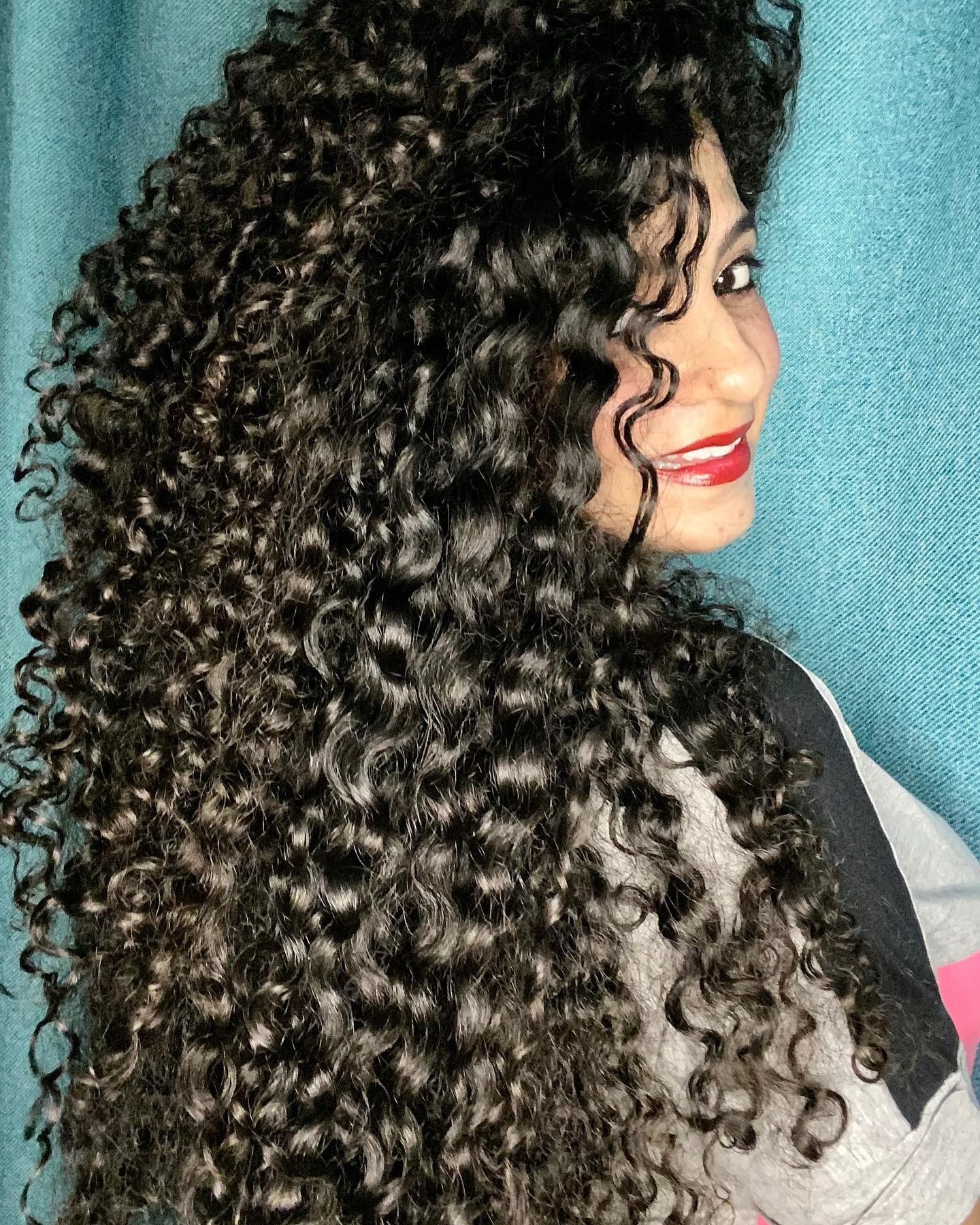
Creating a Halo Braid From Start to Finish
What is a Halo Braid?
A halo braid is a beautiful plaited protective hairstyle created when a cornrow-style braid (or long Dutch braid) wraps around your head.
A great option for the holidays that is quick and easy and can be styled on naturally curly hair as well as all other hair types is the halo braid. The style creates a “halo effect,” hence the name halo braid. You can dress it up or down. You can also add some hair jewelry to give your hair some flair! You can never go wrong with a sleek halo braid.
Gather Your Supplies
Before you jump into the styling process, make sure you have all the supplies you need. Doing this will make the process much quicker and easier to help you to achieve this flawless look in no time.
Hair Prep Supplies 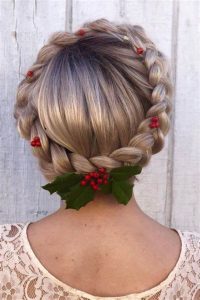
- Clarifying Shampoo
- Moisturizing Shampoo
- Moisturizing Conditioner
- Leave-In Conditioner, Oil, or other moisturizing products of your choice
Hair Stretching Supplies
- Hair Bands
- Blow dryer
Styling Supplies
- Edge control (for use with natural hair textures)
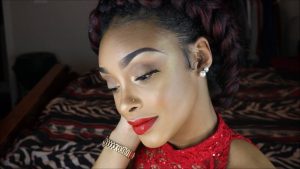
- Wide-tooth comb
- Rattail comb
- Denman Brush (for use with natural hair textures)
- Bobby Pins
- Edge Brush
Prepare Your Hair for a Halo Braid
Doing a protective style on unwashed, dry hair is not a good idea. It can lead to excessive pulling, snapped-off strands, pain, and a not-so-great result.
Hair prep includes cleaning your hair to get rid of product buildup, conditioning to nourish the strands, and moisturizing to ensure your hair stays happy and healthy while the style is in place.
Shampoo Your Hair
The first step to preparing your hair for a protective style is to wash it. First, wet your hair and apply a clarifying shampoo. This type of shampoo is best for removing product buildup from your hair.
When shampooing, be sure to focus on your roots, and let the shampoo work down to the ends on its own. Applying shampoo directly to your ends can cause tangles and unnecessary dryness.
Next, rinse out the clarifying shampoo and, if you have time, repeat the process with a moisturizing shampoo. This will replace some of the moisture that the clarifying shampoo may have taken away, prevent tangles, and ensure your hair is clean.
We recommend staying away from shampoos formulated with sulfates, drying alcohols, or parabens.
Condition Your Hair
Next, follow up with a moisturizing conditioner or deep conditioner. This time focus the product on your ends rather than your roots, as your ends need the most moisture. While your hair is coated in conditioner, detangle it with a wide-toothed comb or denman brush. If using a regular rinse-out conditioner, follow the instructions on the product label for the best results. When using a deep conditioner, allow the product to sit in your hair for 15 mins or more. You can even put a shower cap on to trap the heat from your scalp and boost the penetration of the moisturizing treatment. When rinsing out the conditioner, try to use cold water, as cooler temperatures will close up your hair’s cuticles and lock in the moisture.
Here are some great shampoos and conditioners for curly hair:
- Alikay Naturals Caribbean Coconut Milk Shampoo
- Mixed Roots Compounds Curl Cleansing Shampoo
- Palmer’s Moisture Boost Conditioner
- The Doux Ladies First Honey Shampoo
- Creme of Nature Argan Oil Creamy Hydration Co-Wash
Moisturize Your Hair
After you are done shampooing and conditioning your hair, be sure to use moisturizing products, including moisturizing cream, an oil, a leave-in conditioner, or all three! It is often best to apply these products while your hair is still soaking wet, as this ensures that your hair is getting as much moisture as possible. One popular method of moisturizing curly natural hair is the “LOC Method.”
- L – Start with a leave-in conditioner.
- O – Next, apply oil to lock in the moisture from the leave-in.
- C – Finish it off with a cream to seal the hair cuticle and maintain the moisture in your hair.

Here are some great moisturizers for curly hair:
- SheaMoisture Curl and Style Milk
- The Mane Choice H2O Hydration Therapy Intense Nourishing Leave In Conditioner
- Tropic Isle Living Jamaican Black Castor Oil
- Carol’s Daughter Black Vanilla Leave-in
Stretch Your Hair if Your Hair Is Textured
Stretching your hair can prevent knots and tangles and make it easier to do your halo braid. Multiple methods can be used to stretch your hair. You can try the banding method, blow drying your hair with Tension or braiding your hair to prepare your hair for the halo braid.
Instruction on creating your Halo Braid
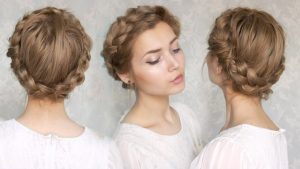 Read below for detailed steps on how to complete a halo braid:
Read below for detailed steps on how to complete a halo braid:
- Use a styling gel or cream and an edge brush or toothbrush to lay your edges down.
- Part your hair at the crown of your head at the highest point. Comb the hair away from the crown of your head in a bowl shape all the way around.
- Part your hair from about 2 inches behind your ear to the crown of your head. This will be the beginning of your braid.
- Begin to braid, incorporating medium-sized sections of your own hair into the braid as you braid around your head. Because you are using your natural hair, the braid shouldn’t be too tight. This will allow you to achieve a fuller look with your braid.
- *Helpful Tip: Be sure to smooth out your hair as you braid. Doing this will prevent tangles and keep the braid looking neat.
- Continue braiding all the way around your head until all of your hair has been incorporated into the braid, and you’ve reached the ends of your hair.
- Tuck the end of the braid underneath your completed halo braid, either above or below it. Use bobby pins to secure it into place.
- Tuck away any flyaways or smooth them down with product, and you are all finished!
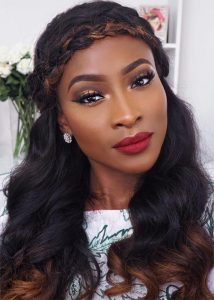
Dos and Don’ts of the Halo Braid
Refer to the below dos and don’ts of halo braid styling to help prevent mistakes and frustration in your styling process.
Do
-
Use as much moisturizing product as you feel your hair needs before and during the styling process to ensure the style will stay in place with little frizz or flyaways.
-
Be aware of how much tension is being applied as you braid. If the braid is too tight, this can cause damage to your scalp and hairline.
Don’t
-
Skip out on the steps to prepare your hair before this style. It can be tempting to jump right into styling, especially if you’re in a hurry, but taking the time to properly care for your hair beforehand will ensure that the style actually protects your hair rather than cause damage.
-
Use the entire length of your extension hair without trimming it. This will make the end of the braid very thick and difficult to tuck away.
-
Get your hair wet after styling. Your natural hair will curl up, causing frizz.


